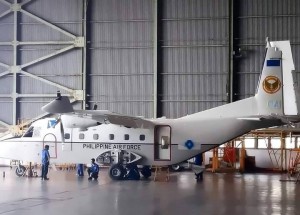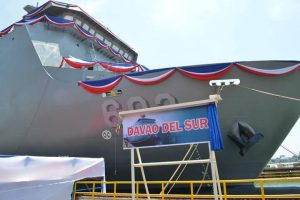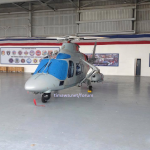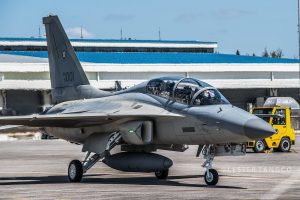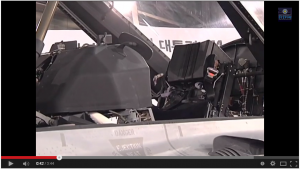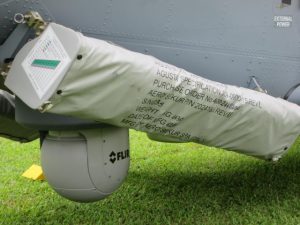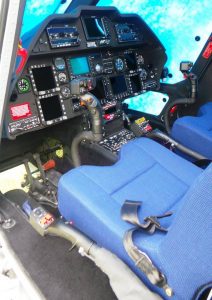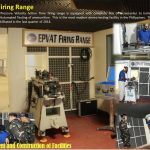
Philippine Defense Today (Adroth.ph)
In Defense of the Republic of the PhilippinesA sustainable, whole-nation, “Kobayashi Maru” solution to China’s aggression
Saturday , 1, December 2018 geopolitics Leave a commentThis thesis (originally posted on the Defense of the Republic of the Philippines forum on August 3, 2018) attempts to answer the hotly debated question:
“What is happening to Philippine policy with China and the West Philippine Sea???”
While the defense of the Republic of the Philippines is the focal point for this thesis, there can be no effective discussion about defense if it is narrowly confined to weaponry and military / law enforcement considerations alone.
You can’t talk about a birthday cake by focusing on the icing while paying no attention to the underlying cake.
Policies made outside the military sphere define what can be done within that sphere. For that reason, proper understanding of the Duterte administration’s approach to the China problem in the West Philippine Sea — regardless of whether the reader agrees with it or not — is a precondition for meaningful discussions about Philippine sovereignty.
The best way to read this thesis is to proceed linearly, from start to finish, in the order it was written. However, being 30 pages long, this thread index was created to facilitate navigation. Each sub-topic is given it own summary, thus allowing the reader to jump directly to topics of greater interest.
At the end of the day, the goal of the thesis isn’t to advocate any single political point of view. It is merely to understand what the current administration is attempting to do . . .
. . . without the noise of partisan politics.
Once that understanding is achieved, then — and only then — can the average Filipino come up with an INFORMED opinion of prevailing policies, and meaningfully argue for OR against these policies.
| Section | Sub-Section | Description | ||
| Chinese timing | By 2014, China knew that conditions were right to advance its interests at the expense of its rivals — and it did. | |||
| United States | The US was in no shape to mount a conventional war. The two wars-without-end in Iraq and Afghanistan had left the US electorate with little appetite for yet another armed conflict. | |||
| Japan | China’s shipbuilding spree has eclipsed the Japanese Coast Guard, both in terms of number and size of vessels. | |||
| Australia | . . . struggling to contain China within its own sphere of influence: from Vanuatu to Papua New Guinea. | |||
| ASEAN | While much has been said about Duterte’s refusal to use ASEAN as a venue for protesting Chinese actions in the West Philippine Sea, ASEAN had already been defanged years earlier when Cambodia actively blocked any attempt association statements that would be unfavorable to China. First in 2012, then again in 2016. | |||
| The scramble for a PH response | Open war with China and surrender are invalid options. Justice Antonio Carpio prefers a “third option” that hides behind the Mutual Defense Treaty with the US and diplomacy. But how viable is this option? | |||
| Evaluating the 3rd option: UNCLOS | The UNCLOS ruling invalidated China’s 9-dashed line. But it did not actually affirm Philippine sovereignty over the West Philippine Sea | |||
| Evaluating the 3rd option: MDT | The US-PH MDT was deliberately crafted so that it would not commit the United States to support the Philippines if it did not agree with Philippine claims. Not all mutual defense treaties are created equal. | |||
| Treaty that created NATO | The US explicitly guarantees support in the event a member of the NATO alliance is attacked. The commonly held perception is that the Philippines enjoys the same protection. Careful perusal of the MDT shows otherwise | |||
| Treaty between the US and Japan | While the US-JP treaty did not guarantee an automatic response, US policy has recognized JP sovreignty over the Senkakus. It is important to understand why the US felt compelled to support Japan | |||
| Vietnam’s losses | Despite being 8th largest importer of weaponry in the world, whose inventory includes everything from Scud medium-range ballistic missiles, modern submarines, frigates, multi-role fighters, and surface-to-surface missiles, Vietnam is at the very least in a stalemate with China it can’t hope to outlast.
The Philippine strategy under Duterte, in contrast, has its sights on a more favorable outcome. |
|||
| Indonesian calculations | In addition to a regionally strong military, Indonesia has a lock on certain critical Chinese exports which China needs, is on the outer edge of China’s claims and is not as important as the Philippines and Vietnam, China officially recognizes Vietnam’s claims. | |||
| Defining the parameters of the problem | A Philippines that defiantly stands up for itself, but lacks, the military strength of Vietnam, the economic resilience and geographical distance of Indonesia, and is dependent on allies that are either threatened by China or are embroiled in other domestic and geopolitical concerns, could very well become low-hanging fruit for a display of Chinese political power. Not so much for international consumption, but for the benefit of the enemy that the Chinese leadership fears most: internal Chinese politics. | |||
| The way forward | War is clearly not an option, for reasons already detailed earlier and as outlined by the President in his speech above. Surrender would violate the constitution, and is therefore an equally invalid option. The ability to hide behind our allies is questionable as is the validity of the opposition’s 3rd option.
Duterte needed a 4th option |
|||
| The 4th option | If China were a bully, Option 1 (war) would have started a fight with the bully that could only end with us in either a wheelchair or the grave. Option 2, surrender, would leave us with nothing. Option 3 (Carpio, et. al.) would have us pick a fight with the bully while hiding behind a big, but distracted neighbor that retains the option to go to the movies whenever he wants . . . regardless of our fitness to resort to option 1 when we are left alone.
Option 4 would have the bully wonder why he had to act like a douche bag in the first place . . . and learn to play nice. It would not make the bully go away, but would essentially make him leave us alone. All the while . . . wondering who we would side with if he ever decided to picked a fight with our big neighbor. |
|||
| What has been prevented | Fishermen are no longer being water-cannoned away from Panatag. Despite having been occupied since 2012, with island-building campaign gaining momentum, China hasn’t built on anything on Panatag. | |||
| What has already, or is currently, being done | Photographic evidence points to improvements on garrisons in the KIG that weren’t done in the previous administration | |||
| Implementing the 4th option |  |
|||
| Step one: Rebooting PH-CN relations | Implement a variation of “the enemy of my enemy is my friend” adage, and flipped the strategy into: “to make a friend of my enemy, make him feel like we have a common enemy”. This is why Duterte is openly bad mouthing our allies — who now actually understand that this is all essentially geopolitical theater as part of a plan to jump-start PH-CN relations.
The administration is banking on the strength of US-PH relationships, as well as of those of its traditional allies, to “absorb” the optics of Duterte’s over-selling of its Chinese charm offensive. After all, if it really were possible to undo years of good relations with mere words . . . then those relationships really weren’t as strong advertised. |
|||
| Step two: Acclimatize China to submitting to Philippine law | This is about training the dragon to obey commands . . . and setting up test cases to measure compliance. | |||
| Step three: Ongoing cooperation | China’s greed, not Philippines weapons, will keep China under control.
This would require even greater commercial engagement with China. So much so that it would actually compel China to respect Philippine law and Philippine claims, to avoid jeopardizing these investments. This would flip the tables on China from one where the Philippines feared Chinese embargoes on Philippine goods to one where China will experience “economic pain” should it choose to violate Philippine interests. |
|||
| Continued build up of Philippine economic defenses | A sustainable response to Chinese aggression isn’t just about buying weaponry, it is actually about making the Philippines — as a country — globally competitive.
This is where the build-build-build initiative comes in: Using the dragon’s own resources to create the financial whip to keep him in line. |
|||
| Learn from the experiences of Sri Lanka, et. al. | This topic outlines how countries fall into China’s debt trap, and how the Philippines actually differs from these in-progress economic disasters. | |||
| Pakistan’s gamble | 85% of Pakistan’s debt is Chinese. But who REALLY has who under control, in light of Pakistan’s geopolitical calculation . . . when Pakistan’s economic corridor actually starts on their China’s equivalent to Mindanao?
|
|||
| Israel & Indonesia: Dancing with a dragon | If loans with China are really recipes for disaster, why are Israel and Indonesia taking part in the Belt & Road Initiative? | |||
| A winning endgame rather than a strategy for “how not to lose” | Open war and surrender are unacceptable options. Justice Carpio’s preferred “third option” — which puts all its faith on the US-PH Mutual Defense treaty, without a proper assessment of how that treaty really works — actually lacks a meaningful end-game, and is prescription for “how not to lose” rather than a proper strategy for winning.
To achieve what Carpio wants to do, Duterte’s “4th option” needs to be given the leeway to work. The goal of the 4th option is to give China a incentive to respect Philippine law and obey Philippine instructions. That incentive is based on the threat of financial retaliation — not military force. |
|||
| Responding to Chinese aggression | A thought exercise about how to respond to China in a future conflict | |||
| Trade War (TW) | Punishing China economically | |||
| Military Action (MA) | Understanding what it REALLY takes to have our allies commit to the Philippine cause. Duterte’s “4th option” needs to happen before Carpio’s “3rd option” |
The DND’s P25B “credit card” for the AFP Modernization Program
Monday , 8, January 2018 AFP modernization Leave a commentThe Department of Budget & Management released the official AFP Modernization Budget for 2018: P25B. This represents a fraction of the total DND budget of P149.7B — which includes everything from salaries, to veterans pension payments, to operational expenses that keep aircraft flying, ships sailing, and guns firing.
When evaluating whether or not the P25B modernization budget is sufficient to cover the various pending and ongoing acquisition projects of the AFP (see here), one must first recall a little understood — but game-changing development — known as the Multi-Year Obligational Authority (MYOA) that was first implemented in the latter half of 2010. (See here).
The MYOA was first used for the aborted Arroyo-era Multi-Role Vessel (MRV), which was then rebranded in the Aquino administration as the “Strategic Support Vessel” (re-using the name of the another Arroyo-era project that was originally based on a second-hand Japanese RO-RO vessel that eventually went nowhere). Since then, the MYOAs have been used for projects such as the Long Range Patrol Aircraft and the Close Air Support Aircraft.
The MYOA is significant because it unshackles the AFP from the limits of the national budget. It does so by using a simple concept that the average Filipino — who has ever made large consumer purchase (e.g., a car, a house, a refrigerator, or even a karaoke machine) — uses to buy what he or she needs while staying within the constraints of the household budget: “payments by installment”. The MYOA is essentially credit card for the department that uses it — to include the DND.
Consider for the example the Close Air Support Aircraft project which is valued at 4,968,000,000. The MYOA document for the project actually breaks the project into the following annual installments: Year 1: 15%, Year 2: 42.5%, Year 3: 42.5%.
 |
While the original breakdown was pegged in 2016, and the actual contract signing didn’t take place till 2 year after, the breakdown formula shown above is comparable to how other projects were calculated, such as the still-pending Long Range Patrol Aircraft project.
Therefore for the first year, the funds required for the CASA project will only be approximately P754M. When applied the P25B annual budget, this would still leave P24.3B for other purchases.
If other projects also use the MYOA concept for their purchases . . .
. . . then instead of looking at the total Authorized Budgets for Contract of each purchase as the total the DND needs each year as its budget
. . . one only need to look at the percentage of the initial installment as the budgetary requirement for each year.
Furthermore modernization funds are NOT actually just limited to the General Appropriations Act. As per Section 6 of the Revised AFP Modernization Program, funds for the acquisition of AFP equipment is actually drawn from the AFP Modernization Trust Fund (AFPMTF). The AFPMTF sources funds from the following sources:
- The National Budget, particularly appropriations for the AFP Modernization
- Income from the Government Arsenal (once it being production for export)
- Sale of DND property
- Income from Public-Private partnerships
- Sale of excess defense articles and other uneconomically repairable equipment
- Funds from budgetary surplus
- Donations from local and foreign sources (this is how the AFP gets funding from Malampaya)
In summary, the MYOA facility, and the flexible funding nature of the AFP Modernization Trust Fund means that the size of AFP Modernization budget is does not actually limit what the AFP can do, as it did in the years before 2010. Even if the AFP were limited to the national budget as its source of funding, the P25B allocation — if done right — would simply represent the installment payment for that year. Thus, there remains much cause for optimism in the coming year, and the years ahead.
2017: What’s happening with the AFP modernization?
Saturday , 23, December 2017 AFP modernization Leave a commentWhile this is the first full year of the Duterte administration, many of the projects completed this year actually had their genesis in either the Arroyo or Aquino administrations. Among the capabilities that the AFP acquired this year are:
- Additional supersonic assets
- Continued increase in cargo transport capability, both by air and sea
- Situational awareness assets (e.g., radars, etc.)
- Armored, night-fighting-capable, mobility for mechanized troops
To give a more complete view of the state of the modernization program, this year’s article is divided into the following sections, presented here in reverse order:
- Pending acquisitions – these are acquisitions that have been publicly announced, either in conventional media or on the DND Website, that are still in various stages of completion. These include projects for which Special Allotment Release Orders (SARO) have been issued. Some are still awaiting results of bids or re-bids. Notable examples of projects in this state are the Philippine Navy Frigate and Combat Utility Helicopter (CUH) projects.
- Awaiting delivery – these are are projects for which the acquisitions have reached the “Notice to Proceed” stage and are in the process of being built from scratch, or are currently undergoing mandatory refurbishment, and have yet to be formally turned over to the AFP for operational use. Notable examples of this category are the long-delayed CN-212 light-lift aircraft that have been photographed in-hangar for months now, but have still not been delivered, and recently-awarded Close Air Support Aircraft project that has been awarded to Embraer.
- Acquisition list – these are items that are officially in the possession of the Armed Forces of the Philippines.
- Diversified sourcing – these are controversial equipment drawn from non-traditional sources and are in the process of being assimilated into the Table of Organization & Equipment.
In addition to the various official acquisitions:
- South Korea has committed to providing the Philippines with one surplus Pohang Class corvette (see here). To this date, details of this project have not been firmed up.
- The reported 24 additional Attack Helicopters has been omitted from this list. For more about this development, see here.
Discuss this article on the DRP forum here: http://defenseph.net/drp/index.php?topic=108.msg8934#msg8934
Companion discussion on the DRP forum Facebook extension here: https://www.facebook.com/groups/rpdefense/permalink/1532038013548707/
Diversified sourcing
This year also marked the first deliveries of equipment from non-traditional sources as part of the administration’s controversial balancing act between traditional allies and regional rivals.
Chinese weapons
A variety of Chinese firearms were donated to the Philippines as part of China’s fence-mending initiatives in the post-Aquino era in July 2017. However, contrary to initial reports about these donations being given to the AFP, these weapons were actually donated to the Philippine National Police.
Russian weapons
Efforts to foster closer ties between the Russian Federation and the Philippines bore fruit on on October 25, 2017 when the guided missile destroyer Admiral Panteleyev delivered a shipment of 5,000 assault rifles, one-million rounds of ammunition, 20 army trucks, and 5,000 steel helmets. The process of assimilating these equipment into the AFP is ongoing. Photos below are care of Inquirer.net particularly Nestor Corrales.
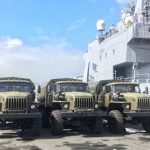 |
 |
Note: This article is also available on the DefensePH.net forum on the long standing What’s happening with the AFP Transformation Roadmap / Modernization Program thread that’s been documenting the progress of the up-arming effort since 2003.
The acquisition list
The following list focuses on actual deliveries of equipment that were made in 2017.
 |
Surface Attack Aircraft / Lead-In Fighter Trainer | 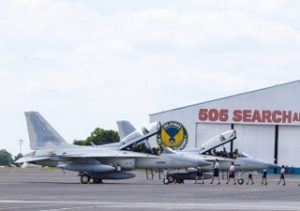 |
FA-50PH deliveries were completed in May of this year, bringing the SAA/LIFT fleet to 12 aircraft. See DefensePH discussion here. Photo c/o PAF.
A number of these aircraft were used in combat against ISIS sympathizers in Butig in January of this year, and more prominently — and more openly — in the Battle for Marawi in June. This earned the Philippines the distinction of being the first country to use these South Korean aircraft in anger.
Note: In June, a self-described anti-corruption group filed a complaint with the ombudsman alleging the FA-50 actually lacked combat capability. This, however, was before the AFP revealed that it had quietly acquired precision guided munitions for which the FA-50 perfectly suited to use. |
||||||||||||||||||
| Cessna 208 | 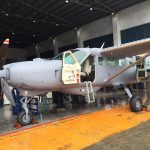 |
The Philippine Air Force received two Intelligence, Surveillance & Reconnaissance (ISR) aircraft from the US on July 28, 2017. These aircraft were assigned to the 300th Air Intelligence and Security Group (300 AISG). See here. | |||||||||||||||||||
| AIM-9 Sidewinder | The SAA-LIFT Munitions acquisition project has been divided into multiple lots. The DND issued a Special Allotment Release Order (SARO) on August 8, 2017 for Lot 1 worth P1,016,787,204.00. On December 29, Public Affairs Officer Arsenio Andolong announced that a Notice to Proceed was issued to Diehl Raytheon of Germany for the missiles on August 31, 2017, and that the contract had already been signed. See here. | ||||||||||||||||||||
| AGM-65 Maverick | 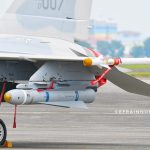 |
This is a component of the SAA/LIFT munitions project. The PAF revealed the existence of AGM-65 Maverick training rounds during the 70th PAF anniversary. The PAF has yet to officially confirm the existence of live equivalents. See here. | |||||||||||||||||||
| Air defense radar acquisition project |  |
Situational awareness capabioity is a matter that the Philippine Air Force refuses to discuss openly. Periodically, however, it will provide “bread crumbs” that enthusiasts can leverage. A PAF sanctioned video showed a video of the EL/M-2288 AD-STAR radar, thus confirming a SIPRI.org report that indicated that the PAF was already in possession of this equipment. A notice of award for the project was issued in January 2016 to the Israeli company Elbit. See here. | |||||||||||||||||||
| Elbit ELM-2106NG | 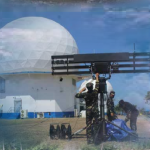 |
Situational awareness capability is a matter that the Philippine Air Force refuses to discuss openly. So while select members of the DefensePH / Timawa community have been aware of these Israeli-made mobile radar units for some time, Operational Security (OPSEC) considerations these have hitherto kept them out of forum discussions. However, an editing oversight included a photograph of this radar unit on an official PAF publication. Additional details are for the PAF PIO to explain. See here. | |||||||||||||||||||
| Squad Designated Marksman Rifle & Mid-length Carbines |  |
PAF receives 50 upgraded rifles on February 28, 2017. Forty-six (46) were in the form of 5.56mm Mid-length Carbines with Aim-point optics, and 4 were Squad Designated Marksman Rifles with ACOG sights. | |||||||||||||||||||
 |
BRP Davao del Sur (LD-602) |  |
The second Tarlac class Strategic Support Vessel was launched on September 29, 2016 at the PT PAL shipyard in Indonesia and christened the BRP Davao del Sur. It arrived at the Port of Manila on the 7th of May and was commissioned on May 10. See here. | ||||||||||||||||||
| Multipurpose Assault Craft (MPAC) Mk.3 | 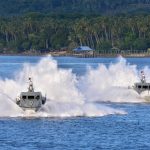 |
The three Mk.3 MPACs were slated to be the first missile-equipped vessels in the Philippine Navy. These were unveiled — without the Rafael Spike missiles they were designed to carry — on the 119th Anniversary of the Philippine Navy on May 22, 2017. See here. | |||||||||||||||||||
| Cessna TC-90 |  |
The Philippine Air Force initially leased five Cessna TC-90 aircraft from Japan for use as interim maritime patrol aircraft (see here). The first of 3 batches of PAF aircrews arrived in Japan for training in December 2016. As per PAF press releases, the training syllabus included 90 hours of ground and 170 hours of flight training. The first two aircraft arrived on March 26, 2017. The DND issued a Special Allotment Release Order for this project in May 31, 2017 worth P155,066,057.00. Later in October, Japan announced that it was converting the lease into a donation. | |||||||||||||||||||
| Tethered Aerostat Radar System (TARS) |  |
The Joint U.S. Military Assistance Group in the Philippines, formally transferred a 28M Class Tethered Aerostat Radar System (TARS) on August 22, 2017. The 28M Class TARS is a self-sustained, rapidly deployable, unmanned lighter-than-air platform which can rise to an altitude of 5,000 feet while tethered by a single cable. Photo c/o US embassy. See here. | |||||||||||||||||||
| Marine Forces Imagery and Targeting Support Systems (MITSS) |  |
This P684.32M project sought to acquire 6 sets of Small Unmanned Aerial Vehicles, 9 sets of Target Acquisition Devices, and 12 kits of Tactical Sensor Integration Subsystems. Details here. | |||||||||||||||||||
| RQ-11B Raven | 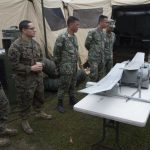 |
On January 27, the Philippine Marines received three units of hand-launched RQ-11B Ravens and associated support equipment from the United States as part of a counter-terrorism grant. See here. | |||||||||||||||||||
| Ford F-550 trucks |  |
On July 7, the NAVSOG received 12 units of Ford F-550 trucks from JUSMAG for mobility purposes as well for transport Rigid Hull Inflatable Boats (RHIB) of the unit. Photo c/o US embassy. See here. | |||||||||||||||||||
| Elbit Soltam 155mm Howitzer |  |
A Notice of Award for this project was issued to Elbit System on June 17, 2015 for 12 units to be issued to both the PA’ and PMC. Finally delivery of the final 9 units was made on July 17, 2017. See here. | |||||||||||||||||||
| M134D gatling guns |  |
JUSMAG turned over a variety of anti-terror equipment to the PMC including four M-134D Gatling-style machine guns. See here. | |||||||||||||||||||
| M40A5 sniper rifles | On January 27, 2017, the Philippine Army and Marines received 85 units of M40A5 sniper rifles from the United States. See here. | ||||||||||||||||||||
| M-4 Carbine |  |
JUSMAG turned over a variety of anti-terror equipment to the PMC including 300 M-4 carbines. See here. | |||||||||||||||||||
| Glock 21 pistols | JUSMAG turned over a variety of anti-terror equipment to the PMC including 200 Glock 21 pistols. See here. | ||||||||||||||||||||
| M203 grenade launchers |  |
JUSMAG turned over a variety of anti-terror equipment to the PMC including 100 M-203 rail mounted grenade launchers. See here. | |||||||||||||||||||
| Rubber boats with outboard motors |  |
JUSMAG turned over a variety of anti-terror equipment to the PMC including 25 units of combat rubber raiding craft. See here. | |||||||||||||||||||
 |
RPG-7 Rocket Launcher acquisition |  |
The Bulgarian Arsenal won the bid to supply the AFP with RPG-7 rockets, thus satisfying the Rocket Launcher Acquisition Project that had been on various modernization reports since 2008. Six launchers and 800 rockets were available for use when the Battle of Marawi broke out. See here. | ||||||||||||||||||
| M-203 grenade launchers | 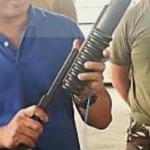 |
On January 27, the Philippine Army and Marines received 400 units of M-203 grenade launchers from the United States. See here. | |||||||||||||||||||
 |
Initial & Final Forming Units and Bullet Assembly |
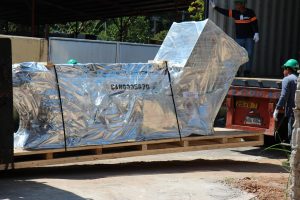 |
The GA took delivery of Initial Forming Unit (IFU) (250 ppm), Final Forming Unit (FFU) (250 ppm) & Bullet Assembly Machine (BAM) (125ppm) procured from Waterbury Farrel of Canada and delivered at the Case & Bullet Division in Bataan Plant on March 23, 2017. These machines will be used in the production of 5.56mm M855 bullets. |
In addition to acquisitions via bidding, South Korea has committed to providing the Philippines with one surplus Pohang Class corvette, and a landing craft. These and the aforementioned Korean acquisitions have yet to be delivered and have therefore been omitted from the list above.
Awaiting delivery
A significant number of high-profile projects remain pending, and have been omitted from the acquisition list. These are listed immediately below.
| Service | Ongoing projects | |||||||

|
Gozar Air Station – on January 16, 2017, the DND allocated supplemental funding for the implementation of Radar Basing Support System Project Lot 1 (Gozar Station). See here. |
|||||||
 |
Anti-Submarine Helicopter Acquisition – Special Allotment Release Order (SARO) SARO-BMB-D-17-0006000, worth P4,559.198,336.00, was issued for this project on May 3, 2017. Agustawestland was the only company that qualified to take part in the bidding in November 2015. The DND announced in January that post-qualification of the company and its offering: AW-159 Wildcat. See here.
Spike ER / Spike NLOS – the AFP is awaiting delivery of Spike ER and Spike NLOS missiles from Israel. These are due to be used with the MPAC Mk.3 and incoming AW159 helicopters respectively. See here. ex-ROKN Mulkae class (LCU-78) – South Korea promised this EDA item in June 2014 and quietly delivered the boat in July 2015. A refit project costing P27,138,295.51 was approved for the vessel, but remains non-operational. Unverified reports suggest that the vessel might actually be Beyond Economical Repair (BER). See here. Amphibious Assault Vehicle (AAV) – Samsung Techwin was declared the lowest single calculated bidder for the P2.5B AAV project. Details here. 40mm automatic grenade launcher – the DND issued a Notice To Proceed (NTP) in favor of Advanced Material Engineer / ST Kinetics, represented locally be Floro International Corp, to supply and deliver eight (8) units of 40mm automatic grenade launchers for the contract price of P19,750,672.00 on March 4, 2014. Details here. 2 1/2 Ton Truck Troop Carrier & Wrecker – Notice to Proceed was issued to Korea Trade-Investment Promotion Agency for the acquisition of 227 units of 2 1/2 Ton Truck Troop Carrier and 10 units of 2 1/2 Ton Wrecker at the cost of P1,419,821,000.00 for the Philippine Marine Corps on October 18, 2017. See here. 1 1/4 ton Truck Troop Carrier – Notice to Proceed was issued to the Korea Trade-Investment Promotion Agency for the acquisition for 108 units of 1 1/4 ton Truck Troop Carrier, worth P313,956,000.00 for the Philippine Marine Corps on October 18, 2017. See here. |
|||||||
 |
KM-450 1/4-ton truck acquisition – on October 19, 2015, the DND issued a Notice to Proceed to Kia motors for the supply of 717 trucks to the Philippine Army. See here.
KM-451 ambulance acquisition – on October 19, 2015, the DND issued a Notice to Proceed to Kia motors for the supply of 60 units of Field Ambulances to the Philippine Army. See here. Force protection equipment – Notice to Proceed was issued to MKU Limited for the acquisition of 3,480 units of Force Protection Equipment at a contract price of P120,435,000.00 on April 17, 2017. A rival company, U.M. Merkata DOO was initially declared the Lowest Calculated Bidder, but was unable to pass Post Qualification, leading to the award to the 2nd LCB. See here. Tactical Engagement Simulation System (TESS) – the DND issued a Special Allotment Release Order (SARO) worth P52,251,959.00 for the purchase of the Tactical Engagement Simulation System Acquisition Project on May 29, 2017. A Notice to Proceed in favor of SD Systems Co., Ltd, Ziwoo Information & Technology, Inc, and AR Vision Inc. was issued on September 2017. See here. |
|||||||
 |
ScanEagle UAS – a Janes.com article reported a pending follow-on purchase of 6 additional Insitu Scan Eagle Unmanned Aircraft Systems (UAS) for the AFP. This confirmed that an undisclosed number of these aircraft were already in Philippine service. See here.
Civil Engineering Equipment Acquisition Project – the DND issued a Special Allotment Release Order worth P150,315,000.00 to fund Lot 3 of the Civil Engineering Equipment Acquisition Project. Lot 3 consisted of 32 units of 5-ton dump trucks and 3 units of 20-ton dump trucks. A notice of award was issued to Hino Motors Philippines for this project on Juney 14, 2017. See here. |
|||||||
 |
|
Pending acquisitions
A significant number of high-profile projects remain pending, and have been omitted from the acquisition list at the bottom of this article. These are listed immediately below.
| Service | Pending projects | |
 |
Long Range Patrol Aircraft acquisition project – the previous bid for this project was closed in July due to disqualification of all bidders. A new bid was opened in September. See here.
Combat Utility Helicopter (CUH) – on December 20, 2017, the DND issued a Special Allotment Release Order (SARO) worth P12,073,122,578.00 was issued to fund the acquisition of 16 Combat Utility Helicopters. The SARO, however, did not identify the specific model selected. But in the recent past, the PAF acquired the W-3 Sokol and Bell 412 for its CUH requirements. Details here. SAA/LIFT munitions – the ordnance that SAA-LIFT aircraft will carry are being acquired via a separate acquisition project. These include Air-to-Air Missiles (312 Pieces), Air-to-Surface Missiles (125 Pieces), 20mm ammo (93,600 Pieces), and Chaffs/IR Flares. A SARO for Lot 2 worth 3,292,926,550.00 was released June 20, 2017, and another for Lot 1 worth P1,016,787,204.00 was released on August 8, 2017. A Timawan / DefensePH shoulder-tap hinted at the selection of AIM-9L Sidewinder missiles for the air-to-air missile component. Inert versions of the AGM-65 Maverick were revealed during the 70th PAF anniversary thus identifying the Air-to-Surface component of the package. Details here. See also the following thread: Teddy Locsin: Letting the cat out of the bag re the SAA/LIFT Munitions project? Miscellaneous PAF munitions – the DND issued SARO-BMB-D-17-0010323 which released P267,888,300.00 for the acquisition of “air munitions”. The SARO gave no additional details about this acquisition, which was issued in July 12, 2017. Another SARO (SARO-BMB-D-17-0011782) worth P312,077,200.00 was used to acquire “special munitions”. See here. Full-motion flight simulator (FA-50) – in 2014, the DND announced the opening of a P246M project to acquire a full-motion simulator for for the FA-50 SAA/LIFT aircraft of the Philippine Air Force. On August 17, 2017, the DND issued a Special Allotment Release Order worth 362,904,800.00 for the acquisition of the FA-50 simulator with Integrated Logistics Support (ILS). See here. Full motion flight simulator – in June 2017, the PAF issued a bid invitation for the construction of a full-motion flight simulator worth P13,879,340.00. See here. FA-50 ComSec requirements – on September 8, 2017, the DND issued a Special Allotment Release Order (SARO) worth P53,350,000.00 for FA-50PH ComSec Requirements. See here. |
|
 |
Frigate Acquisition Program – this P18B project seeks to acquire two brand new multi-role frigates in a complicated two-stage bidding process. Garden Reach Shipbuilders & Engineers Ltd of India was initially declared the Lowest Calculated Bidder. However they were rejected during Post Qualification due to concerns about the bidder’s financial capacity and ability to implement the order. The contract was eventually awarded to Hyundai Heavy Industries. Details here.
Flag-level politics surrounding this acquisition broke onto the national spotlight with the unceremonious relief of the Philippine Navy Flag Officer in Command (FOIC). See here. Multi-Purpose Assault Craft (MPAC) – on December 15, 2017, the DND issued a Special Alottment Release Order (SARO) worth P269,799,999.99 for the acquisition of three (3) additional Multi-Purpose Assault Craft for the Philippine Navy. As of writing, it is unclear which of the three existing MPAC models this batch would be based upon. See here. AN/SPS-77 Sea Giraffe 3D Air Search Radars for the GDP class frigates – on December 14, 2016, the US State department approved the sale of two AN/SPS-77 Sea Giraffe, explicitly, for use on two ex-Hamilton class cutters in PN service. See here. Jacinto Class Patrol Vessel Upgrade Phase 3 – this project sought to upgrade the weapons and electro-optical systems of all three ships of the class. See here. Jacinto Class Patrol Vessel Upgrade Phase 2 – this is a sought, among other things, to overhaul and improve the main propulsion system, electrical, and various auxiliary systems of BRP Artemio Ricarte (PS-37). Other members of the class had already been upgraded to this standard. See here.
|
|
 |
Shore-Based Missile System – arguably, the AFP modernization controversy of the past year was the deferral of the Philippine Army’s Shore-Based Missile System (SBMS) to an as yet undisclosed “horizon” of the AFP Modernization Program. This was discussed on the DefensePH forum on the following thread. Funds for the P6.5B project — which originally became public in 2011 and — were realigned to acquire force-protection equipment instead. It was a stunning reversal of a territorial defense initiative that drew boisterous condemnation on defense social media and earned the Chief of Staff AFP, General Hernando Iriberri, the monicker “General Helmet”.
M113A2 Firepower Upgrade project – on November 28, 2017, the DND issued a Special Allotment Release Order (SARO) worth P1,051,650,000.01 for the “Firepower Upgrade of M113A2” project of the Philippine Army. See here. Thermal sights and cameras – on November 23, 2016, the DND issued bid documents for a P240M acquisition of thermal optical sights and thermal camera. On September 18, 2017, the DND issued a Special Allotment Release Order (SARO) worth P136,809,543.00 for this project.See here. 60mm Mortar Acquisition project – 150 mortars are being acquired. Details here. Ballistic helmet (standard & special operations) – the DND issued a bid invitation worth P1,189,605,000.00 for standard and special operations ballistic helmets on November 22, 2017. See here. 0.50 cal Machine Gun Red Dot Sight System – the DND issued a Special Allotment Release Order, in favor of the Philippine Army, worth P80M to cover the procurement of a .50 Cal Machine Gun Red Dot Sight System. See here. |
|
 |
Chemical, Biological, Radiological, and Nuclear (CBRN) Equip’t (Lot 1) – on November 16, 2017, the DND issued two Special Allotment Release Orders (SARO) with a combined value of P109,569,777.00 for the Chemical, Biological, Radiological, and Nuclear (CBRN) Equipment Acquisition Project (Lot 1). See here.
Pag-asa Island Beaching Ramp – responding the President’s instructions on April 6, 2017 to improve facilities in KIG, SND Lorenzana conducted a personal tour of facilities on Pagasa Island on April 21, 2017 an announced a plan to improve Rancudo Airfield and to build a long-awaited beaching ramp to facilitate the offloading of cargo. On June 6, the DND issued a Special Allotment Release Order (SARO) worth P231,272,837.00 for the construction of the beaching ramp. According to Defense spokespoerson Arsenio Andolong, the ramp is scheduled to be completed in “early 2018”. See here. Marine Intelligence Acquisition Project – the DND issued a Special Allotment Release Order worth 73,537,500.06 for a “Maritime Intelligence (MARINT) acquisition project” on June 8, 2017. See here. |
|
 |
Indigenous assault rifle production – the Government Arsenal is in advanced negotiations with ST Motive of South Korea to acquire equipment for local manufacture of assault rifles based on the M-16/M-4 design. Similar arrangements with other manufacturers, such as Colt’s Manufacturing Company are also being explored, but none are as advanced at ST Motive. |
Related articles:
2016: What happening with the AFP modernization program
2015: What’s happening with the AFP modernization program
2014: What’s happening with the AFP modernization program
2013: What’s happening with the AFP modernization program
2012: What’s happening in the AFP capability upgrade program
2016: What’s happening with the AFP Modernization
Sunday , 1, January 2017 AFP modernization Leave a commentThe year 2016 delivered the last of the Aquino administration’s contributions to the AFP modernization effort. While many had their genesis during the Arroyo administration, credit for continuation and eventual completion of these projects can — within reason — be attributed to BSA III. As with 2015, this year continued the trend towards high-value, capability-leap-frogging, acquisitions for all three services.
Among the capabilities that the AFP acquired this year are:
- Additional supersonic assets
- Continued increase in cargo transport capability, both by air and sea
- Armored, night-fighting-capable, mobility for mechanized troops
Among the highlights for the year was the transit of the Philippine Navy’s latest frigate past the iconic Golden Gate bridge, as it made its way from Coast Guard Island in Alameda to the Philippines.
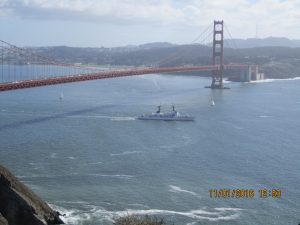 |
 |
|
| BRP Andres Bonifacio (FF-17) crossing the Golden Gate bridge. A DefensePH.net exclusive photo | SND Delfin Lorenzana tweeting about the FF-17 photo |
To give a more complete view of the state of the modernization program, this year’s article is divided into the following sections, presented here in reverse order:
- Pending acquisitions – these are acquisitions that have been publicly announced, either in conventional media or on the DND Website, that are still in various stages of completion. Some are still awaiting results of bids or re-bids. Others have had Notices to Proceed (NTP) to issued. Notable examples of projects in this state are the the Philippine Navy Frigate and yet-again-restarted Close Air Support Aircraft projects.
- Awaiting delivery – these are are projects for which the acquisitions are in the process of being built from scratch, or are currently undergoing mandatory refurbishment, and have yet to be formally turned over to the AFP for operational use. Notable examples of acquisitions in this state would be the Strategic Sealift Vessel, which is currently undergoing trials in Indonesia and the ex-ROKN Mulkae class LCU, which is already in the Philippines, but is still awaiting refurbishment before it can be commissioned into service.
- Acquisition list – these are items that are officially in the possession of the Armed Forces of the Philippines.
In addition to the various official acquisitions, South Korea has committed to providing the Philippines with one surplus Pohang Class corvette (see here). To this date, details of this project have not been firmed up. It is unclear if this project will materialize.
Note: This article is also available on the DefensePH.net forum on the long standing What’s happening with the AFP Transformation Roadmap / Modernization Program thread that’s been documenting the progress of the up-arming effort since 2003.
The acquisition list
The following list focuses on actual deliveries of equipment that were made in 2016.
 |
Surface Attack Aircraft / Lead-In Fighter Trainer |  |
The second batch of two FA-50PH aircraft, #003 and #004, arrived from South Korea, via Taiwan, at 1130H on December 1, 2016 . FA-50PH #002 suffered Foreign Object Damage (FOD) to its engine grounding the aircraft for most of 2016, but a replacement engine was acquired in time to allow it and FA-50 #001 to escort their newer bretheren upon their arrival. See DefensePH discussion here. | ||
| C-130T acquisition | 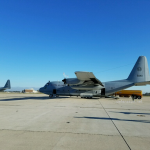 |
The second C-130T (#5040) Hercules acquired from the United States as EDA arrived at 7:56 p.m on October 10, 2016 at Benito Ebuen AFB in Mactan, Cebu. The photograph on the left shows the aircraft enroute to the Philippines at an air base in Southern California. See DefensePH discussion here. | |||
| UH-1 upgrade program | 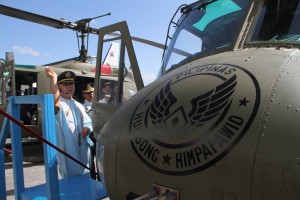 |
Four (4) UH-1 Iroquois helicopters, with upgraded engines, tail boom strake, and fast fin, were commissioned into PAF service on January 20, 2016. Photograph c/o Philippine Air Force | |||
 |
BRP Tarlac (LD-601) |  |
The first Strategic Support Vessel built in PT PAL (Indonesia) was launched as the BRP Tarlac (LD-601) on January 18, 2016, and arrived in Manila on May 16, 2016. The ships of the Tarlac class are the largest combat vessels in Philippine Navy history. See here for the DefensePH discussion on this ship.
See the construction timeline for this ship here. |
||
| BRP Andres Bonifacio (FF-17) |  |
The US government sold the ex-USCGC Boutwell to the Philippine government on July 21, 2016 as part of the Excess Defense Article (EDA) program. It sailed for the Philippines on November 1, 2016 and arrived at Pier 13 of Manila South Harbor on December the 9th. Incidentally, the first crew of the BRP Gregorio del Pilar, previously the USCGC Hamilton, served on board the Boutwell as part of their training for accepting the PN’s first Hamilton class WHEC. See here. | |||
| BRP Gregorio Velasquez (AGR-702) |  |
The research vessel R/V Melville was transferred to the Philippine Navy on April 29, 2016, arrived on ____, and named after Dr. Gregorio Velasquez — the father of Philippine Phycology, the study of algae. See DefensePH discussion here. | |||
|
The Australian government donated HMAS Brunei and HMAS Tarakan, members of the Balikpapaan class Landing Craft Heavy (LCH), which eventually became BRP Ivatan and BRP Batak respectively. The Philippine Navy then acquired the remainder of the class and commissioned them on May 30 as the BRP Agta, BRP Iwak, and BRP Waray. | ||||
 |
Elbit UT-25 RCWS | 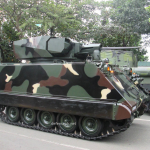 |
Select M-113s, that the LAD received last year, were up-armed with Elbit systems, thermal imager equipped, 25mm Unmanned Turret (UT-25). See here. | ||
| Rubber tracks |  |
LAD started fielding one-piece rubber tracks manufactured by Soucy Defense in their M-113-based vehicles. See here. | |||
| Battle Dress Uniform |  |
The Philippine Army issued a new Battle Dress Uniform (BDU) developed by a Canadian manufacturer. See here. | |||
 |
Rotary Ammo Loading Machine |  |
The GA commissioned its first rotary loading machines which were acquired from the Vasini Corporation (Italy). These are slated to increase production by 25 million rounds, bringing the Arsenal’s total annual production to 75 million rounds. See here. | ||
| Laser etching machine |  |
The photo on the left shows GA staff inspecting a laser etching machine that was eventually delivered to GA on August 25, 2016. With completion of the P35M acquisition, the GA gained the ability to place serial numbers on EACH individual cartridge it produces and then package them in 30-round cartons which will then be bar coded. This acquisition was designed to facilitate accounting and traceability of ammunition. This was a good governance measure undertaken in light of past controversy over AFP ammunition being found in the hands of enemies of the state. See here. | |||
| Philippine Navy SDMR & MSSR | 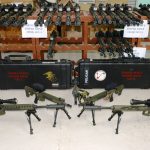 |
On October 27, 2016, the Philippine Navy received 36 refurbished and upgraded rifles. Ten units were in Squad Designated Marksman Rifle (SDMR) configuration w/ trijicon optical sight. Another 10 units were in Marine Scout Sniper Rifle (MSSR) Gen5 configuration with AAC sound suppressors. The remaining 16 units were in MSSR Gen-4 w/ AAC sound suppressors. See here.
Four sets of MSSR Gen 4 were delivered in May 20, 2016. |
|||
| AFP JSOG SDMR |  |
AFP JSOG submitted 46 unserviceable rifles to the GA on May 27, 2015. These units were refurbished to Squad Designated Marksman Rifle standard, with 5 units being equipped with advanced combat optics and low-profile gas block. They were returned to JSOG on October 19, 2016. See here. | |||
| M249 refurbishment program |  |
The Government Arsenal undertook refurbishment of 5 M249 Squad Automatic Weapons. These machine guns were part of the first acquisition under the AFP Modernization Program in 2003. See here. |
In addition to acquisitions via bidding, South Korea has committed to providing the Philippines with one surplus Pohang Class corvette, a landing craft, and several rubber boats. These and the aforementioned Korean acquisitions have yet to be delivered and have therefore been omitted from the list above.
Awaiting delivery
A significant number of high-profile projects remain pending, and have been omitted from the acquisition list. These are listed immediately below.
| Service | Ongoing projects | |||||||
 |
|
|||||||
 |
ex-ROKN Mulkae class (LCU-78) – South Korea promised this EDA item in June 2014 and quietly delivered the boat in July 2015. A refit project costing P27,138,295.51 was approved for the vessel, but remains non-operational. Unverified reports suggest that the vessel might actually be Beyond Economical Repair (BER). See here. Amphibious Assault Vehicle (AAV) – Samsung Techwin was declared the lowest single calculated bidder for the P2.5B AAV project. Details here.
|
|||||||
 |
Rocket Launcher Light Acquisition Project – Airtronic USA, Inc. was selected to supply 400 US-made RPG7 rocket launchers, and associated 40mm rockets, as part of a Foreign Military Sale (FMS) deal. While components of this deal have reportedly been delivered, the remainder remain obscure. For that reason, this project remains listed as “awaiting arrival. See here |
|||||||
 |
|
Pending acquisitions
A significant number of high-profile projects remain pending, and have been omitted from the acquisition list at the bottom of this article. These are listed immediately below.
| Service | Pending projects | |
 |
Long Range Patrol Aircraft acquisition project – the PAF issued an invitation to the 2nd-stage bidding for this project in October, 2016. See here. It is worth noting that the PAF is due to receive 5 leased TC-90 aircraft from Japan for use in maritime patrol. How this lease arrangement affects the long-standing LRPA project is uncertain.
Close Air Support Aircraft acquisition project – the bid for this project failed for the second time in December 2015. However, instead of proceeding with a negotiated procurement as per the IRR of RA9184, a third bid was announced in October 2016. See here. AN/SPS-77 Sea Giraffe 3D Air Search Radars for the GDP class frigates – on December 14, 2016, the US State department approved the sale of two AN/SPS-77 Sea Giraffe, explicitly, for use on two ex-Hamilton class cutters in PN service. See here. Air defense radar acquisition project – like the SAA/LIFT project, this P2.68B acquisition is part of the PAF’s systems approach to reviving the country’s ability to enforce the Philippine Air Defense Identification Zone (PADIZ). A notice of award for the project was issued in January 2016 to the Israeli company Elbit. See details here. SAA/LIFT munitions – the ordnance that SAA-LIFT aircraft will carry are being acquired via a separate acquisition project. These include Air-to-Air Missiles (312 Pieces), Air-to-Surface Missiles (125 Pieces), 20mm ammo (93,600 Pieces), and Chaffs/IR Flares. Details here. See also the following thread: Teddy Locsin: Letting the cat out of the bag re the SAA/LIFT Munitions project? |
|
 |
Frigate Acquisition Program – this P18B project seeks to acquire two brand new multi-role frigates in a complicated two-stage bidding process. Garden Reach Shipbuilders & Engineers Ltd of India was initially declared the Lowest Calculated Bidder. However they were rejected during Post Qualification due to concerns about the bidder’s financial capacity and ability to implement the order. The contract was eventually awarded to Hyundai Heavy Industries. Details here.
Anti-Submarine Helicopter Acquisition – Agustawestland was the only company that qualified to take part in the bidding in November 2015. The DND announced in January that post-qualification of the company and its offering: AW-159 Wildcat. See here. Jacinto Class Patrol Vessel Upgrade Phase 3 – this project sought to upgrade the weapons and electro-optical systems of all three ships of the class. See here. Jacinto Class Patrol Vessel Upgrade Phase 2 – this is a sought, among other things, to overhaul and improve the main propulsion system, electrical, and various auxiliary systems of BRP Artemio Ricarte (PS-37). Other members of the class had already been upgraded to this standard. See here. Marine Forces Imagery and Targeting Support Systems (MITSS) – this P684.32M project sought to acquire 6 sets of Small Unmanned Aerial Vehicles, 9 sets of Target Acquisition Devices, and 12 kits of Tactical Sensor Integration Subsystems. Details here. 40mm automatic grenade launcher – the DND issued a Notice To Proceed (NTP) in favor of Advanced Material Engineer / ST Kinetics, represented locally be Floro International Corp, to supply and deliver eight (8) units of 40mm automatic grenade launchers for the contract price of P19,750,672.00 on March 4, 2014. Details here. |
|
 |
Shore-Based Missile System – arguably, the AFP modernization controversy of the year was the deferral of the Philippine Army’s Shore-Based Missile System (SBMS) to an as yet undisclosed “horizon” of the AFP Modernization Program. This was discussed on the DefensePH forum on the following thread. Funds for the P6.5B project — which originally became public in 2011 and — were realigned to acquire force-protection equipment instead. It was a stunning reversal of a territorial defense initiative that drew boisterous condemnation on defense social media and earned the Chief of Staff AFP, General Hernando Iriberri, the monicker “General Helmet”.
Thermal sights and cameras – on November 23, 2016, the DND issued bid documents for a P240M acquisition of thermal optical sights and thermal camera. See here. Tactical Engagement Simulation System (TESS) – on December 21, the DND issued bid documents for P80.4M acquisition of tactical simulation equipment. See here. 60mm Mortar Acquisition project – 150 mortars are being acquired. Details here. KM-450 1/4-ton truck acquisition – on October 19, 2015, the DND issued a Notice to Proceed to Kia motors for the supply of 717 trucks to the Philippine Army. See here. KM-451 ambulance acquisition – on October 19, 2015, the DND issued a Notice to Proceed to Kia motors for the supply of 60 units of Field Ambulances to the Philippine Army. See here. |
|
 |
Indigenous assault rifle production – the Government Arsenal is in advanced negotiations with ST Motive of South Korea to acquire equipment for local manufacture of assault rifles based on the M-16/M-4 design. Similar arrangements with other manufacturers, such as Colt’s Manufacturing Company are also being explored, but none are as advanced at ST Motive. |
Related articles:
2015: What’s happening with the AFP modernization program
2014: What’s happening with the AFP modernization program
2013: What’s happening with the AFP modernization program
2012: What’s happening in the AFP capability upgrade program
AFP was a user of Chinese equipment long before Duterte
Monday , 19, September 2016 AFP modernization, Air Force, Army, Philippine Navy Leave a commentThe 48th anniversary of the 250th Presidential Airlift Wing, on the 13th of September, 2016, gave President Duterte’s critics yet another treasure-trove of “Duterteisms” that have since become fodder for punditry on defense social media and even generated international interest in Philippine foreign policy. In this latest episode, Duterte stated, among other controversial assertions, his openness towards equipment AFP equipment from China and Russia.
While its worth noting that in a separate speech in Cebu, President Duterte also mentioned interest in sourcing equipment from Israel, indicating a policy of broadened equipment sourcing beyond traditional sources, critics — and numerous media articles — focused on the “China” aspect of the discussion.
The prospect of Chinese weapons complicating the AFP’s logistics picture with equipment that are incompatible with the existing Western-oriented support infrastructure is cause for legitimate concern. Should Sino-PH tension escalate, Chinese equipment could very well be subjected to a spare-parts embargo. Other than being part of an “unconventional warfare” operation, use of a potential opponent’s weapons also introduces operational security (OPSEC) risks because the opposing force knows as much about weapon’s capabilities as the user — if not more so.
These risks however, arguably, are not lost upon AFP planners, and the chain of command. Sourcing equipment from China is not, in fact, new and have hitherto been restricted to non-kinetic equipment. It is actually very likely that all we will see will simply be more of the same.
The following Philippine Star article from May 27, 2007 relates one instance where the PRC offered assistance to the AFP:
DND seeks more military aid from China
Updated May 29, 2007 – 12:00amThe Department of National Defense (DND) has called for sustained defense and training exchanges with China, including military aid, following a security cooperation dialogue between the two countries last week.
Defense Undersecretary Antonio Santos relayed this message to Lt. Gen. Zhang Qinsheng, deputy chief of staff of the People’s Liberation Army, who led the Chinese delegation to the 3rd Annual RP-China security cooperation conference at Camp Aguinaldo in Quezon City Friday.
. . .
On top of allowing Filipino troops to undergo military schooling in Beijing, the Chinese government donated heavy military engineering and medical equipment to the Armed Forces of the Philippines last year. – Jaime Laude
An Inquirer.net article on the same story presented the following photograph of the donation of PY165H graders and unidentified bulldozers.
 |
Since then, these Chinese donated engineering equipment have been seen in the colors of all AFP services. Photographs are care of various Timawans.
 |
 |
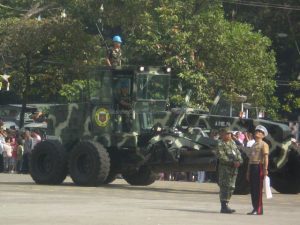 |
||
| Philippine Navy | Philippine Air Force | Philippine Army |
Exactly what Chinese equipment Duterte is prepared to acquire for the AFP is unclear. What is certain, however, is that the potential equipment that can be had from China is as broad as its manufacturing base. Such equipment need not even be military in nature.
Why 5.56mm sniping rifles for the AFP?
Saturday , 10, September 2016 Army, Philippine Army, Philippine Navy Leave a commentOn August 21, 2006 the Timawa forum saw a discussion between a Philippine Marine Colonel (MBLT6) and a Singaporean Army Major (Shingen) about sniper rifles an engagement distances in the the Philippine setting. The end result was a glowing response from Shingen as follows:
This is one of the best post, or not the best post i have seen so far in this forum. Thank you so much for clarifiying things, all your examples are very clear and informative, especially no. 3. Would add this to my scrapbook and use it as material if required back camp.
This accolade elevated this discussion to a “reference thread” which moderators took special care in keeping troll free.
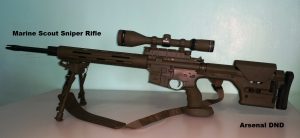 |
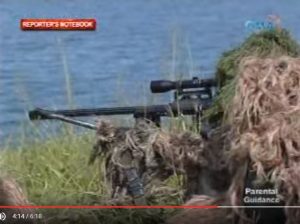 |
|
| Marine Scout Sniper Rifle (5.56mm) | Barret (12.7mm / .50 cal) |
In an effort to preserve this discussion from database crashes and similar incidents, this section the following thread has been replicated here:
First, lets define terms. The term primary sniper rifle refers to primary range. Our (Marine Corps) doctrine requires three types of sniper rifles ie., primary range (max 600m for company level) , intermediate range ( 800m max and a Bn organic) and long range (1000m and a Brigade organic). We practice combined arms concepts which means higher units may attach thier organic units to subordinates in order to tailor fit their capabilities to the environment they are operating in and the threats they are facing. secondly, the term sniper rifle does not dictate on the caliber. Its defined as a rifle with a scope accurized with high quality parts (match grade) and uses match grade ammunition. The 5.56mm round in the MSSR qualifies per our doctrines and international definition.
Why have 3 types of sniper rifles? Based on our experience in battling communist, muslim seperatist and military adventurism for 30+ years in different terrains in the Philippines. We had learned that under different sniping conditions the characteristics of a type of sniper rifle has its pros and cons.
Example 1. a sniper stalks his prey that requires moving at the least observation by the enemy the reason he has to be a master of camoflauge to avoid detection. It will be diffucult to crawl with a cal 50 barret. The MSSR will be a favorite in this conditions.
Example 2: The MSSR or primary range rifle is the king of 600m engagements simply due to lesser recoil. It accounted most of the kills in our year 2000 campaign in central mindanao. Why? against multiple targets and follow through shot in case of a miss nothing beats the 5.56mm round. the lesser recoil ensures target acquisition after recoil. We tested this with the equally accurisided M-21 7.62mm. each equally skilled sniper were required to shoot 6 poppers each and armed with the M21 and MSSR at 400m. The MSSR finished his 6th popper while the other was just starting to aim for his 3rd – FOV issues due to recoil i’m sure you know. Example 3: the cal 50 barret has the needed characteristics for longer range simply because of of its heavier 750 grain bullet which is less prone to that devil wind that all snipers fear. The MSSR cannot compete with this at longer range. But at shorter ranges below 600m the barret has distinct disadvantages. It has a louder sound report, flash and concussion (leaves/bushes moves) allowing easier detection and wow expect counter fire from the enemy. A sniper always ensures he is not detected please don’t do this in engaging the enemy with highly trained countersnipers. The barret is best in engagements at 1000m+ in a jungle environment if you can find one. the rule is more max at 400m. The MSSR has a an almost negligble flash an sound report. The 24 inch barrel has its advantages it ensures the total burning of the propellant before the bullet exits the muzzle hence lesser flash as well as higher velocity means lesser leads in moving targets – the 5.56mm round does have at least 250+ fps higher speed the the 7.62mm and cla 50 round – right?. longer barrels adds more velocity and having more range and lethality. and of course lesser concussion and sound report compared to the 7.62 and cal.50 round. the MSSR was adopted by us in 1996 and copied by the IDF and US in 2000 you are more than welcome to learn from our experiences.
I really had the same perceptions in my youth when I was a Lt 24 yrs ago. The macho 7.62mm or even the cal 30 (7.62mm x 54) M-1 garand round were superior in all aspects. But my experience change that with advancements in weapons technology as well as my combat and competition experience. I was amazed with the results of our 2000 year campaign as well as the success of the M-16 in the Service Rifle Competitions in Camp Perry,Ohio which since 1996 it had dominated the championships beating the favorites as the M-1A1 and military versions M-14 rifles. We in the Marine Corps have the only existing sniper school in the Philippines since 1967. We load our own match ammo for 5.56mm and 7.62mm in 69 grain Sierra BTHP match, 75 grain Hornady and 168 grain Sierra in 7.62mm BTHP match as well as subsonic rounds for both calibers for use in our Night Fighting Weapon System. Don’t know if there are existing sniper schools in other in southeast asian countries. And please no more lethality issues – shot placement at 600m is not an issue for the MSSR our snipers are trained to hit head shots at 600m and even a cal .22LR at shorter distances can ensure that kill. I’ve seen that – we operate in the most volatile region in Southeast Asia.
How are “special units” in the AFP different from each other?
Saturday , 10, September 2016 Army, Philippine Navy Leave a commentAt one point or another, military enthusiasts ask this question. Typically in relation to discussions that dwell on the ascendancy of one special unit versus another. “Who is more elite?” When faced with such queries, professional often point out there each special unit is trained for a specific task and require individuals suited for such tasks. That does not inherently make them better than anyone else.
To put things in perspective, the author put together the following summary to differentiate between the units that were frequently the object of the “Who is the most badass?” inquiry. Pros on the forum reviewed this summary favorably, and has since been treated as a reference thread.
Special Forces – force multipliers; unconventional warfare experts as MikeLogics pointed out. Their job is to win over the local populace to the government’s side and to organize/lead them against the enemies of the state. This is the reason why CAFGU organization was originally their domain (and remains so to a certain extent). Their arsenal is not limited to their weapons, but include their smiles and personality. (There’s a reason why a lot of times they’re the ones manning the exhibits during Philippine Army day)
Based on the “A” in their acronym [SFRA], they have a thing about jumping out of aircraft that are working just fine.
Scout Rangers – tip of the spear. COIN is about offering the choice between the carrot and the stick. The rangers are the stick. Whereas SF and SOT teams mingle with the population, Rangers avoid contact to keep the enemy guessing about their whereabouts. (This, according to Victor Corpuz, is the reason why Ranger-only operations don’t work — you need an SF/SOT component)
Force Recon – vanguard of the MBLTs. The PMC reportedly doesn’t really consider Force Recon an elite unit. Since PMC doctrine emphasizes combined arms tactics, all units are part of a whole and just have different jobs. Force Recon’s job is harder than of other units since they’re the ones who are supposed to find / make first contact with the enemy, and consequently fire the first shots.
NAVSOG/SWAG – just add water. When you need an offensive punch from the sea, short of a full-scale amphib operation, these guys are it. (No idea if there are any doctrinal limits to how far in-land they can be used). Armed seaborne operations, such as underwater demolition and hostile-boat boarding are part of the menu.
Modernization projects don’t die. They just get re-labelled
Friday , 5, August 2016 Philippine Navy Leave a commentIn the twilight of the Arroyo administration, the AFP was poised to embark upon its most ambitious, most expensive project in AFP history. What would become the largest naval vessel ever to join the fleet the Multi-Role Vessel (MRV) project.
As per PN sources, it was supposed to have consisted of one South Korean-built LPD based on the Makasaar class coupled with a partnership agreement with a yet unselected local partner to build 5 more in the Philippines. After years of negotiation, the DND and the Republic of South Korea had agreed upon project pricing as well as a cap on project escalation costs. The initial vessel would have included the following components
 |
By September 2010, P2B had already been allocated for the project — taking advantage of the then brand new budgetary instrument the DND’s arsenal: the Multi-Year Obligating Authority.
 |
To the horror of the individuals intimately involved in MRV negotiations, when the Aquino administration took over power from Arroyo, all existing projects were suspended. Budgets already allocated — to include the P2B already set aside for the MRV — were earmarked for re-allocation.
The MRV project, as already negotiated, was dead.
However . . . a mere five years after that calamitous turn of events that saw career PN officers resigning their commissions having lost sight of the way ahead for the Philippine modernization program, the BRP Tarlac entered service.
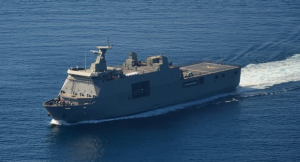 |
Gone was the original in-country manufacturing deal. In its place was a boost for the Indonesian shipbuilding industry. The AAV component had been spun off into a separate project that is also slated to be awarded to South Korea. The mobile hospital component was no more.
The specific of the MRV project had morphed into the Strategic Sealift Vessel. The Philippine Navy still got its ship.
Fast-forward to 2016. Another President . . . another project.
Reports emanating from the grapevine strongly suggest that the P18B Frigate Acquisition Project is headed for a deal-cancelling delay. While Hanjin Heavy Industries’ bid cleared post qualification hurdles the continued viability of its tender in the face of deferral of actual notice of award is causing the same concerns and general consternation as the original delay of the MRV.
This really should not come as a complete surprise. With a price tag of “P18,000,000,000.00”, it is simply too large of deal to slide through to the contract-signing-state without scrutiny or any form of due diligence on the part of leaders who would then be answerable to taxpayers for the selection.
Will the FAP go the way of the MRV project? There is cause to believe that it would.
That leaves open a number of interesting questions:
Does that put an end to the Philippine Navy’s efforts to acquire Frigates?
Absolutely NOT.
Sail Plan 2020, and the plans that came before it, are products of careful study of the country’s maritime security requirements. While many aspects of the minutiae of requirements definition may post technical challenges, the broadsrtokes for the necessary capabilities are well established. If not completed within the Duterte administration . . . it will be pursued in the next.
As demonstrated by the SSV project . . . the PN will put in the work to get the ships that it needs.
If the deal is indeed cancelled, does this mean that we are back at the start of the bidding process?
What Duterte ultimately decides will be known when he makes it. Predictions about what that decision will ultimately be is a function of the analyst’s faith in — or lack thereof — in the President’s capacity for reason. Setting crystal-ball-gazing exercises aside, we can at least look at the procurement framework within which the President is operating to see what he can do if he so chooses.
Short answer is NO
When the Aquino administration select the FA-50PH as LIFT, it represented the only time that it exercised the following provision in the Implementing Rules and Regulations for the government procurement law:
Negotiated procurement
Negotiated Procurement is a method of procurement of goods, infrastructure projects and consulting services, whereby the procuring entity directly negotiates a contract with a technically, legally and financially capable supplier, contractor or consultant only in the following cases:
. . .
g. Upon prior approval by the President of the Philippines, and when the procurement for use by the AFP involves major defense equipment and/or defense-related consultancy services, when the expertise or capability required is not available locally, and the Secretary of National Defense has determined that the interests of the country shall be protected by negotiating directly with an agency or instrumentality of another country with which the Philippines has entered into a defense cooperation agreement or otherwise maintains diplomatic relations: Provided, however, That the performance by the supplier of its obligations under the procurement contract shall be covered by a foreign government guarantee of the source country covering one hundred percent (100%) of the contract price;
Promulgation of the Defense System of Management (DSOM), comprehensive requirements definition and equipment selection process, within the AFP should have given the Aquino administration the doctrinal and budgetary definition for outright selection of equipment . . . WITHOUT the need for time consuming bids.
Sadly, for reasons that hopefully will come to light in time, after the FA-50 acquisition the Aquino administration refused to leverage this capability for subsequent modernization projects. As a consequence . . . the Frigate Acquisition Project is where it is now. Caught between two administration with an uncertain future.
Will the Duterte administration be gun-shy about using this authority to do away with public biddings and simply pick up where the Frigate Acquisition Project left off, and select South Korean frigates outright?
You be the judge
Contractors with lowest bid not the best for Duterte
Published August 2, 2016 9:53pm
By TRSIHA MACAS, GMA News
President Rodrigo Duterte said on Tuesday that he would not follow the government’s “lowest bid” rule in awarding contracts for government projects as it led to corruption and usually left the government with sub-standard equipment.. . .
The president explained that he did not want to purchase equipment that would not be durable.
“Pahabulan ng presyo, pababaan mo ang presyo mo. Iyong iba, 100, ipabili nito ng 20, eh ‘di ipabili mo nalang sa akin iyong made in–alam mo na. Huwag muna ngayon kasi may alitan tayo. Tapos sabihin ng mga sundalo, ‘Sir, nasira agad.’ Kagaya ng jeep ng police. Tignan mo iyong binili nila. Wala na. Sabi ko, ‘Huwag mo akong bigyan ng sh-t na iyan.’ Ako, ang pulis ko doon [Davao City], Isuzu, and it will last for about three to five years. Huwag lang ibunggo ng mga buang,” Duterte said.
“Iyong [medical] equipment ninyo, state of the art. Bahala na mahal. Ayaw ko iyong gagamitin, nasisira,” he emphasized.
Duterte said that to get the best, he would ask experts to guide him on which had the best value.
< Edited >
– See more at: http://www.gmanetwork.com/news/story/576085/news/nation/contractors-with-lowest-bid-not-the-best-for-duterte#sthash.KNNgElAr.dpuf
This article is also available on the Timawa.net forum here.
What is the FA-50PH really for?
Saturday , 16, July 2016 FA-50, Philippine Air Force Leave a commentThe Korean Aerospace Industries FA-50PH is the single most sophisticated aircraft in the Philippine Air Force inventory. The arrival of the first two aircraft on November 28, 2015 heralded the formal start of the service’s efforts to rebuild it’s air defense operations capability. These two “Fighting Eagles”, as South Korea calls them, were the first of what will ultimately be 12 aircraft. According to multiple PAF sources, two more aircraft are due in the final quarter of 2016, while the remainder will be delivered in 2017 at a rate of one a month.
The aircraft in question appears below. Photographs c/o Lester Tongco, reposted with permission.
 |
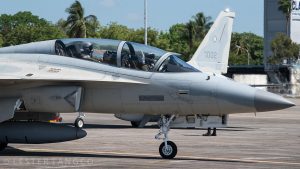 |
The FA-50 represents many firsts for the PAF, to include the following:
- First brand-new fixed-wing combat aircraft acquired since the F-5A Freedom Fighters that were acquired in the early 60s.
- First aircraft with fly-by-wire technology
- First combat aircraft capable of integrating with network-centric warfare environments
- First supersonic aircraft since the retirement of the last F-5A in 2005.
On February 19, 2016, these two aircraft conducted an air interception exercise involving a Philippine Air Lines Airbus carrying President Aquino who was returning from a US-ASEAN summit in the United States. This was reportedly the first intercept exercise of its type attempted by the Philippine Air Force since 1998 using its now retired F-5As. This exercise not only benefited the pilots of the aircraft, but also practiced coordination between air traffic controllers of the Civil Aviation Administration of the Philippines (CAAP) and the PAF’s Air Defense Wing. CAAP and PAF controllers were responsible for tracking the President’s aircraft and guiding the FA-50s to a point where they could use their own radars to find the airliner.
During the PAF’s heyday, in the US-bases funded 60s, such intercepts were part of normal operations for enforcing the Philippine Air Defense Identification Zone (PADIZ). During this period PAF fighters would intercept all manner of aircraft, from Soviet bombers transiting the South China Sea enroute to Cam Ranh Bay in Vietnam, to Air Force One on a visit to the Philippines as shown below.
 |
| Photograph c/o Francis Neri Albums |
These aircraft, however, appear to have a questionable future under the administration of President Rudrigo Duterte, who raised a firestorm in defense social media circles when he called the FA-50 “useless” at an economic consultation forum in Davao City on the 21st of June
The President had the following to say about the crown jewel of the PAF’s jet-aircraft fleet. Relevant excerpt begins at Time index 36:07:
| Video | Excerpt: | |
| DUTERTE: “You only have . . . what . . . two F-50s? Bakit mo binili yan?
Kayong mga taga Air Force, do not misconstrue my . . . I am a Filipino, I’m a citizen of this country and I have every right to say what I want to say. Sayang ang pera doon. You cannot use it for anti-insurgency which is really the problem of the moment. You can only use it for ceremonial fly-bys. What do I care about <fade out>. Kung binili mo ng choppers na may night vision, you when the kidnapping . . . you could have a catch up those guys There’s only one purpose for buying it. To match the airpower . . . at least 1-on-1 sa China. Pero, beyond that Scarborough Shoal, anak ng hueteng there are 300 Migs there. They can reach Manila in 6 minutes” |
Duterte’s objections to the aircraft are predicated upon three assumptions:
- The FA-50s were acquired to counter Chinese air power in the West Philippine Sea
- FA-50s cannot be used for the anti-insurgency campaign
- The AFP prioritized the FA-50s in lieu of helicopters with night-fighting capability
This article seeks to fact-check these assumptions.
Assumption 1: The FA-50s were acquired to counter Chinese air power
The short response to this would be: “No it is not”.
A detailed answer will require an understanding of what the FA-50 can and cannot do, and a high-level review of the AFP modernization program as a whole. To draw attention to the misconceptions surrounding this aircraft, both among its critics and even some of its well-meaning supporters, this article will begin with what the aircraft can’t do.
Had the Philippine Air Force sought an effective counter to Chinese fighters, the FA-50 would have been a poor choice. In South Korean Air Force service, the Fighting Eagle is a replacement for aging F-5E and F-4 fighters. Both are second-string combat aircraft relegated to supporting roles for Korea’s principal fighters, namely the F-15K air superiority fighter and the relatively smaller — but still formidable — F-16K multi-role fighter.
The FA-50s range is limited. Airforce-technology.com cites a range of 1,851 km for the pure trainer version of this aircraft: the T-50 . While the Fighting Eagle’s actual range is classified, the fact that it’s external dimensions are virtually identical to the T-50, it stands to reason that it’s range would be no better, and could only be worse given the range-sapping external weapons pylons and the weight of additional equipment of the FA-50. In contrast, the smaller of the multi-role fighters cited above — the F-16 — has range of 3,221 km.
To put these figures into a counter-China context, Pag-asa island is approximately 852.77 kilometers from Metro Manila — a one-way flight that’s already almost half the aircraft’s range . This leaves the FA-50 little time to remain on station over Pag-asa before it needs to return to an airfield to refuel. It also has no in-flight refueling capability, therefore to reach, and loiter, over Philippine garrisons in the West Philippine Sea, it would need to sacrifice its precious few under-wing pylons to carrying fuel tanks, much as it did during its ferry flight from South Korea to the Philippines. Fuel tanks in lieu of weapons.
| Landing in Taiwan enroute to the Philippines. Note fuel tanks on the various hardpoints |
The FA-50 is also hampered by lack of manufacturer-certified Beyond Visual Range (BVR) air-to-air weaponry. Official KAI documentation only cites AIM-9 short-range air-to-air missiles as its principal counter-aircraft armament, along with its 20mm gatling gun. While support for longer ranged missiles is not impossible, it will require a compatibility testing process that has not yet taken place.
All these facts inevitably lead to the question: If the aircraft is at such a significant disadvantage when facing Chinese fighters, why did the PAF bother to buy the FA-50 in the first place? Or in Duterte’s words “Bakit mo binili yan?”
The PAF’s long-term modernization program actually calls for the acquisition of Multi-Role Fighters (MRF) that can establish air superiority within the Philippine Air Defense Identification Zone (PADIZ), as well as provide air support for AFP forces on the ground or on water. These would be the “true fighters” that would challenge Chinese Sukhois (not Migs) in the event of escalation of hostilities and not the FA-50.
As per a Department of National Defense White Paper on the Philippine Defense Transformation — the successor to the AFP Modernization Program and the Capability Upgrade Program — the PDT’s goals with respect to air power are as follows:
Strategic Air Strike Force through a combination of manned and unmanned assets in order to gain and maintain air superiority over friendly and contested territories. The force should be capable of neutralizing a threat’s military potential that may be used against our forces; and, of supporting our surface forces through air-delivered weapons. The force should have multi-role fighter aircrafts and unmanned combat air vehicles (UCAV)23 capable of air interdiction, air combat maneuvering, air-to-ground and air-to-ship missions. Inherent to the assigned missions is the training and proficiency of the fighter pilots and operators. Continuous training and participation in joint and/or combined air, land, and sea exercises shall be undertaken towards developing a proficient Strategic Air Strike Force.
While a number of candidates for MRFs have been discussed in Philippine media at various points over the past 6 years — from the Saab Gripen to the Lockheed-Martin F-16 — selection of the actual aircraft has not yet been made. Nevertheless, the nature of the mission assures the following facts about these prospective MRFs will apply:
- There will be a significant performance gap between existing PAF trainers and MRFs. Although the F-5As were retired in 2005, PAF pilots have not been flying supersonic since long before then because concerns about the material condition of the F-5s restricted them to subs0nic flight. This has implications at multiple levels, to include the physical training regimen for pilots that would acclimate to high-g maneuvers.
- MRFs will employ technologies that are generations ahead of whatever currently exists within the PAF. Fly-by-wire, for example, is the gold standard for modern fighter aircraft. This a system of multiple flight-computers that translate what a pilot wants to do, into actual control surface configurations. A pilot’s flight controls are no longer directly connected to the tail, ailerons, and elevators of the aircraft, they simply send requests to the fly-by-wire computers. While relatively common in the civilian airline industry, the PAF has virtual no experience operating — and more importantly maintaining — this technology. Other avionics components present in modern MRFs, from multi-mode radars to advanced low-bypass turbofans, present similar learning curves for airplane handlers — both on the ground and in the air.
- MRFs will require a level of logistical support to which the service is unaccustomed. The quantum leap in capability of MRFs comes at a price, not only in pesos, but also in logistical complexity. The piecemeal acquisition of replacement components and cannibalization of existing aircraft for parts — that have become the norm for the PAF — will have a much more detrimental effect on these sophisticated aircraft than on its existing fleet of Vietnam-era aircraft. This will will require paradigm shifts within the organization, no only for aircraft maintainers, but even the budgetary planners responsible for forecasting logistical requirements.
To ensure a safe, sustainable, transition to this class of advanced aircraft, the Philippine Air Force deemed it necessary to acquire a bridging platform that would help the entire organization prepare for the herculean task of assimilating future MRFs into the fleet. The consequences of transitioning neophyte pilots to advanced MRFs too quickly are illustrated by the accident rate of the Indian Air Force, which is partly attributed to the lack of intermediate-performance aircraft, that the aerospace industry currently refers to as Lead In Fighter Trainers (LIFT).
This search for a bridging platform gave rise to the acquisition project formally called the “Surface Attack Aircraft / Lead-In Fighter Trainer” project. This is an amalgamation of two previously separate projects: an effort to acquire ground attack aircraft which dates back to the original 1995 modernization program, and the relatively new LIFT project. To put the role of the FA-50 into perspective, LIFT will be discussed first.
In the PAF, LIFT fits into the following training syllabus (photos c/o of the Francis Neri Albums reposted with permission):
 |
 |
 |
 |
 |
||||
| Basic Trainer | Advanced Trainer | Basic Jet Trainer | Lead In Fighter Trainer | Multi-Role Fighter |
Prospective PAF student pilots begin flight instruction with the Cessna T-41s of the PAF Flying School. Pilots that pass the initial screening phase and are destined for fixed wing aircraft proceed to the SIAI-Marchetti SF-260 for more advanced flight instruction. The subset of candidates that are qualified for fighter pilot duty with the Air Defense Wing learn the air defense trade on the SIAI-Marchetti S211 Basic Jet Trainer.
In addition helping new pilots transition to high-performance fighters, LIFT also reduces operational costs associated with multi-role fighters by offloading part of proficiency training to the comparatively cheaper LIFT.
A notable difference with the PAF’s LIFT, compared to similar aircraft in other nations, is that it is combat-capable. South Korea, for example, uses the unarmed T-50 for its LIFT purposes, while using their FA-50s for the above-mentioned low-end attack role. To understand why the PAF went this route, one must understand the service’s experience with its trainers.
 |
 |
|
Training aircraft in the PAF have, historically, found themselves pressed into combat service either to make up for force-deficiencies, or as a stop-gap for a complete lack of suitable combat aircraft. When the T-28 Trojan close air support aircraft were withdrawn from service in the wake of the 1989 coup, select SF-260 trainers were converted into combat configuration. The retirement of the F-5A fighters in 2005 gave rise to Project Falcon, which produced the air superiority-grey colored AS211 which served as the PAF principal “fighter substitute” for almost a decade.
In a move that seemingly accepted the inevitability of history repeating itself, the PAF Project Management Team merged its LIFT requirement with its long-standing Surface Attack Aircraft project. So instead of acquiring a pure LIFT aircraft which would have been limited to flight instruction, the project acquired the FA-50PH: an aircraft suitably equipped to prepare the organization for the arrival of more capable multi-role fighters, with a secondary function of providing ground attack functionality. Like the S211 that came before it, it will also serve as an interim fighter — simply because the PAF doesn’t have anything else that even remotely approximates its capabilities.
Assumption 2: FA-50 cannot be used for anti-insurgency
Unlike it’s air-to-air weaponry, the FA-50 is already cleared to use a variety of ground attack weapons. All of which could be brought to bear in internal counter-insurgency campaigns, particularly against groups with a predilection for constructing defensive fortifications. The most recent instance of military action requiring fixed-wing strike was in Lanao in August 2008 where AS-211s were used.
The FA-50 can carry more ordnance than either the AS211s or the Vietnam-era OV-10 Broncos of the 15th Strike Wing. For comparison, the following table indicates the number of Mk.32 500lb bombs that each plane carries. Data reported from multiple sources within the PAF.
| Aircraft | Number of Mk.82 500 lb | |
| OV-10 | 4 | |
| AS-211 | 2 | |
| FA-50 | 6 |
A brochure from Korean Aerospace Industries gives the following insight into the capacities of the various hardpoints, as well as support for bomb racks on the inner pylons, which makes the six-bomb report possible.
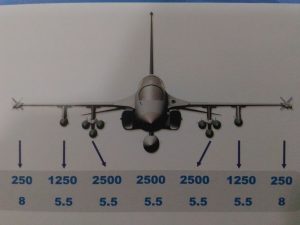 |
While superior bomb-carrying capacity is, by itself, a significant improvement. What sets the FA-50 apart is the increased bombing accuracy because of its avionics. Existing AS211 and OV-10 are largely dependent on the pilot’s aim, and restricted to specific bombing profiles that require flying over the target, at relatively low heights, for manual weapons release. The FA-50s, on the other hand, is not limited to such profiles.
While PAF sources are reticent to discuss these facets of the aircraft openly, the FA-50’s ground attack mission in the South Korean air force, combined with its lineage with the F-16 strongly, as well as open source data about the aircraft’s avionics (e.g., embedded GPS, Inertial Navigation System, Heads Up Display etc.) strongly suggests the presence of computer-assisted bombing capability that greatly improves the effectiveness of conventional bombs. In South Korean service, the FA-50 is equipped with an Israeli-made Elta EL/M 2032 Multi-Mode Fire Control radar system which aviation Website Daegel.com describes as:
The radar enhances a fighter jet’s air-to-air, air-to-ground, and air-to-sea capabilities, enabling long-range target detection and high-resolution mapping, among other features.
This translates to highly accurate “dumb bomb” delivery either via Constantly Computed Impact Point (CCIP) or Continuously Computed Release Point (CCRP) bombing modes. While these two bombing techniques have been in existence for decades, it wasn’t until the FA-50 that the PAF could begin training in them. CCRP would allow the FA-50 to drop its dumb bombs from very high altitude — above cloud cover — and still have reasonable accuracy. The exact Circular Error of Probability (CEP) for bombs dropped in this manner is secret, but will undeniably be less than that of Precision Guided Munitions (PGM) which public sources have cited at 20ft. However, CCIP and CCRP are still used in conjunction with PGMs for situations where guidance for the PGM becomes unavailable after weapons release (e.g., weather interfering with guidance laser, etc.). PGMs are, in fact, best used in conjunction with either CCIP or CCRP.
Purely for perspective, the following are two bombing maneuvers made possible by CCRP. These images were taken from an October 1957 article in Popular Mechanics about computer-assisted bombing in the USAF, purely based on Inertial Navigation Systems, and without the benefit of embedded GPS systems. Note that these samples are purely to enhance appreciation for the flexibility of the technology. It is not a declaration that these are, or will be, part of the PAF’s own Tactics, Techniques, and Procedures (TTP).
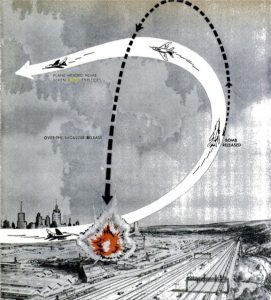 |
 |
|
| Bomb toss | Vertical release |
Furthermore, as per PAF sources, the availability of embedded training systems on the aircraft — which were integral to its training function — permit the simulation of weapons delivery without actually expending ammunition.
Even without either CCIP or CCRP, the FA-50’s superior ordnance carrying capacity translates to more Paveway II Laser Guided Bombs (LGB) that can be brought to be bear on a target for precision targeting of multiple High Value Targets (HVT) with minimal collateral damage. This relatively new addition to the PAF arsenal provides a valuable capability in counter-insurgency, and one that was actually demonstrated in March 2012 reportedly c/o of an OV-10 carrying at least one such weapon. Although photographs of the event have never been release, a PAF modernization document with a photograph of a PAF OV-10 in the process of dropping a Paveway II was circulated in defense social media.
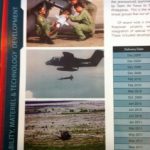 |
 |
|
| PAF OV-10 dropping Paveway II, photo c/o of a PAF pubication | Photo c/o Rappler.com |
Assumption 3: The AFP prioritized the FA-50 in lieu of helicopters with night fighting capability
The AFP has already had five years of the COIN-centric first phase of the Capability Upgrade Program which initially replaced the 1995 AFP Modernization Program. It’s insurgency-focused capabilities are at an all-time high, as are it’s night fighting capabilities. Given that the speech was delivered before the President formally assumed office, and before his formal briefing about the AFP’s capabilities, it is not inconceivable that he was not aware that the Philippine Air Force actually already has eight (8) all-weather AgustaWestland AW-109 attack helicopters with the ability to detect ground targets day or night. These are addition to the two attack helicopters of the Philippine Navy.
High speed photo reconnaissance
The rebuttals to the assumptions listed above have already addressed the question of “What is the FA-50 for?” in broad strokes. This section will explore other uses for which this aircraft is highly suited.
One function that the FA-50 is uniquely suited is high-speed reconnaissance. Not to be confused with maritime patrol, which is slated to be fulfilled by another PAF project, which will be discussed in another article.
No other Philippine asset, military or civilian, can put human eye-balls above a crisis point faster than the FA-50. Be it an emerging crisis anywhere within the Philippine EEZ, or photo reconnaissance of remote disaster stricken areas as part of the preliminary assessment of a disaster response plan.
Although not currently part of the SAA/LIFT munitions project, reconnaissance pods that can provide real-time images to a ground station do exist and could broaden the FA-50’s usefulness. The following pod is an example. Only proper evaluation and testing will determine its suitability for the our aircraft.
 |
| Reecelite Tactical Reconnaissance Pod. Photo c/o Rafale |
Why a brand new plane for LIFT?
Older, 2nd-hand, aircraft to perform the SAA/LIFT function could have potentially been acquired in lieu of brand new aircraft. However the availability of low-use airframes, with sufficient airframe life to satisfy the requirements of Administrative Order 169, Series of 2007 , while not impossible, is questionable.
3.2.3. Used equipment or weapons system may be acquired, provided that:
a. The used equipment: or weapon system meets the desired operational requirements of the AFP;
b. It still has at least fifteen (15) years service life, or at least fifty percent (50%) of its service life remaining, or if subjected to a life extension program, is upgradeable to attain its original characteristics or capabilities;
c. Its acquisition cost is reasonable compared to the cost of new equipment; and
d. The supplier should ensure the availability of after-sales maintenance support and services,
At any rate, right or wrong, the previous administration’s experience with sticker shock at a lackadasical attempt to acquire refurbished F-16s in 2012, soured the DND against refurbished fighters. This ill-fated F-16 project is a story in itself, and is reserved for a future article.
Selecting brand new aircraft, on the other hand, that are still in production not only assures the PAF of thousands of flights hours of useful airframe life — which translates to decades of service — but also of continued availability of parts. A factory-fresh F-16, for example, has a designed airframe life of 4,500 flight hours which, depending on the sortie rate and demands of the mission profiles, will actually last decades.
Delving into the PAF’s history yet again, it was the lack of spares for an aircraft that had long since been retired from service with the country of origin that eventually grounded the most capable fighter the PAF has operated to date: the F-8H Crusader.
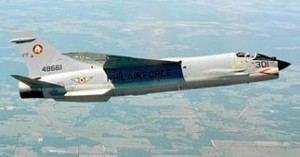 |
||
| F-8H in flight. Photo c/o Vought Corp. | F-8s scrapped in Clark AFB |
Summary
Modernization of an air force cannot happen overnight. Dr Sanu Kainikaa, an air power strategist with the Royal Australian Air Force and a retired fighter pilot and Wing Commander of the Indian Air Force, summarizes this task on page 48 of his book “The Art of Air Power”, published by the Air Power Development Center of the Royal Australian Air Force:
Of all military capabilities, air power is the most cost intensive to develop, acquire and operate. This places an added responsibility on air force leaders to select and maintain the appropriate air power capabilities that will provide the necessary level of security to the nation. The situation is further complicated by the long lead time required to establish air power capabilities of the right calibre. In combination, the onus of responsibility on the air force leadership is ominous. On the other side of the coin, it has also to be emphasised that air power is critical to success in all contemporary conflicts and is, therefore, a crucial element in the overall warfighting capability of a military force.
Another aspect of the cost of developing air power capabilities is the quantum of resources that need to be expended to create a cadre of professionals who clearly understand all aspects of the professional application of air power. This is once again a drawnout process and cannot be put in place at short notice or in an ad hoc manner. Time and experience are of the essence here, perhaps even more than the need for financial resources. The resource intensiveness of the physical assets and the need to invest wisely in long-term developmental requirements—both in hardware and human capabilities—makes air power a unique capability. This also makes it a complex capability to sustain at the necessary level of competence.
Even if it were not the Duterte administration’s intention to pursue the PAF’s modernization during its tenure, it would be behoove his administration to preserve whatever gains had already been made to give future administrations the latitude to fulfill such plans. The momentum that the PAF is gaining with its FA-50s –if not in terms of raw military power, then in the airpower-related skills for the entire organization — must not be dismissed casually.
Had Duterte’s assumptions about the FA-50PH been correct, then he would have been justified in the stance he took at the SMX forum. With an acquisition cost of US$426.6 million (P19.9 billion), these 12 aircraft alone cost more than the budgets of the Department of Science & Technology and Department of Trade & Industry combined. These are funds that could have been put to use to shore up other aspects of the AFP’s capabilities, or kept in the AFP Modernization Trust Fund for use in the purchase of the true MRFs that the PAF intends to buy.
However, re-examination of the rationale behind why the FA-50 was purchased in the first place, its capabilities, and a simple review of the Philippine Defense Transformation program, yields flaws in these assumptions that arguably can be attributed to lack of information. This article was written in the spirit of aiding efforts that the DND, AFP, and PAF are undoubtedly taking to educate the President about the goals of the PAF component of the modernization plan. The sustainable transition to an external facing air defense posture and the future of the Air Defense Command hinge upon the success of this education campaign. It is of such importance that it deserves the support of any and all knowledgeable patriot.
Ensconced within that transition plan is the FA-50PH, and the training benefits it provides both pilots and plane handlers. It would do the AFP well to highlight the safety benefits that a bridging platform offers to pilots to the President. After all, Duterte is a pilot himself.
Could self-reliance save AFP modernization under Duterte?
Wednesday , 22, June 2016 AFP modernization, Self-Reliant Defense Posture Leave a commentThe Aquino administration’s Presidential candidate, Mar Roxas, had campaigned on a promise of continuing with the courses of action of the outgoing administration and represented continuity of an AFP Modernization Program that achieved gains hitherto unseen:
| Aquino administration | Arroyo administration | Ramos administration | ||
| 2015 | 2007 to 2011 | The Plan: 1995 |
But with the victory of President-elect Rudrigo Duterte, a self-described socialist whose campaign platform centered on an inward-focused good governance campaign, declarations of doom about the AFP Modernization Program swept across the defense-centric social media landscape. The perceived outlook for modernization, particularly for acquisitions that were either still planned or ongoing was bleak.
Further aggravating the concerns of the defense-enthusiast community were his controversial statements with regard to US and Australian relations and his openness to bilateral talks with China regarding the West Philippine Sea and an open aversion to war with the red dragon that had been gobbling up Philippine territory in its western approaches. To many, the nightmare scenario had arrived.
Stigma around implements of war
Given Duterte’s preference to avoid conflict, and announced repertoire of populist programs that benefit the poor, defense planners have reason to worry about the still-unallocated billions of pesos required for ongoing and upcoming programs:
- Ten of the 12 FA-50PH Surface Attack Aircraft / Lead-In Fighter Trainers remain in the queue for delivery
- The Long-Range Patrol Aircraft has not yet even reached the bid invitation phase
- The Close-Air Support project remains in bid-supplement limbo
- The second Tarlac class Strategic Sealift Vessel (SSV) remains under construction
- Two multi-purpose Frigates are still in the post qualification phase and are ripe for cancellation
- Three Multi-Purpose Attack Craft (MPAC) Mk.3 whose design is still being finalized
While the Philippine Navy has been careful to couch the SSV project as a dual-purpose asset that will prove useful in the event of another Yolanda crisis as well as for evacuating Filipino OFWs in crisis zones like the Middle East — in addition to its obvious amphibious assault function — the other projects listed above lack this protection. All are clearly implements of war . . . a war that Duterte appears hell-bent on avoiding.
Highlighting the value of building up a credible defense capability is a given. For a mayor a major city, security as an enabler of progress should be a fairly well understood concept. Especially for one that oversaw a city that had its share of security crisises over the past decades. Your constituents can’t earn a living if they aren’t safe.
External defense, however, would arguably be an unfamiliar rendition of an old tune. The enemy in this case is different, and enjoys an overmatch that is simply beyond whatever resources the Philippines could ever hope to muster on its own. Our current, and foreseeable, defense posture only makes sense when done in concert with our allies — allies with whom Duterte’s campaign rhetoric raised concerns. How such relationships play out over the next six years are hard to predict.
Defense planners need a ready answer for the question: “Would spending for external defense just be throwing money away?”
Among the plethora of reasonable answers to the questions above, one tack that the DND-AFP would do well to consider would be to highlight the opportunities these assets represent to the domestic economy. Benefits that would be available for both existing commercial offerings as well as potential future endeavors between the original manufacturer of the equipment and Philippine companies.
If the DND-AFP is able to demonstrate a reasonable, direct, return on investment for the Philippine economy, then the billions spent would be even more of an investment for national growth than the argument that defense is an enabler for economic prosperity. If the defense establishment can emphasize how these acquisitions put food on the table of Filipino workers, then these acquisitions will fit well with the President-elect’s campaign focus on business opportunities. The local military industrial complex could very well be what saves the AFP modernization program.
The next two sections of this article will present concrete examples of opportunities that map to the list of projects, presented earlier, that could be at risk in the event of a budget crunch:
- Economic windfall from aircraft aquisitions
- Economic windfall from maritime acquisitions
Economic windfall from aircraft acquisitions
As of writing, the Philippines lacks any serious indigenous aeronautical endeavors. The dreams offered by the XL-14 Maya and XL-15 Tagak in the 50s, and even the Cali Pinto of the Marcos years have been relegated to the realm of the “what-if” with no clear-cut path to the here and now.
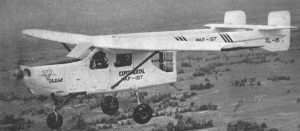 |
 |
|
| XL-15 Tagak c/o Janes All the Worlds Aircraft 1954 | Cali Pinto c/o Francis Neri albums |
Near-term economic benefit from additional air assets, therefore, would be found in maintenance contract opportunities. The influx of new aircraft — from supersonic jets to new transport and patrol aircraft — create numerous potential service contracts for qualified companies. Keeping what we buy in the air with as much involvement of local companies — providing licensed or OEM-certified services — as possible ensures operational readiness of these aircraft as well as providing economic benefit to the local aerospace industry.
The increased capabilities of these new aircraft come at a price. Not only in terms of capital outlay, but upkeep. Modern electronics need levels of attention that older, less-sophisticated and less capable, systems could potentially get by without. This is particularly true of cutting-edge modular avionics systems that can’t simply be jury-rigged into operation when they become nonoperational.
Consider the following aeronautical developments and a simplified sampling of their corresponding support burden would be candidates for logistical agreements:
Business-as-usual, part-by-part, piecemeal acquisitions — that would have the AFP issue bid invitations for each individual component, with all the attendant bureaucratic overhead and potential for delay-causing re-bids — would hamper operational readiness of these aircraft in ways that wouldn’t on older but less-capable, Vietnam War-era aircraft. An FA-50, for example, could be fully operational in all respects. But if its fly-by-wire computers are rendered non-operational by the lack of appropriate spares it will stay on the ground. A non-operational “hangar queen” or non-mission-capable asset is a poor return on investment for the people’s money.
While the AFP modernization law requires that each acquisition include provision for an Integrated Logistics Package (ILP) from the manufacturer, such packages are finite. The following excerpt from a Supplemental Bid Bulletin from the PAF’s Attack Helicopter project, which eventually acquired the AgustaWestland AW109, presents an example of the extent of spares that are included in acquisitions. This document lays out how much time the AFP typically has to establish a more sustained spares acquisition scheme after a weapon system arrives.
 |
For the long-term, in-country capability for supporting these aircraft must be developed. If done with the nation’s interests in mind, this need could be filled by Philippine companies — in partnership with foreign manufacturers of the equipment — that would provide logistical support arrangements to ensure local availability of manufacture-approved parts as well as in-country maintenance and repair capabilities. Companies offering these services would be contracted to provide ready availability of critical components at pre-negotiated prices based on forecasts of the need for such parts (e.g., based on maintenance schedules, Mean-Time-Between-Failure (MTBF) data, statistical trends, etc.) as well as foreign currency fluctuation tolerances.
This would reduce the delays created by having to source replacement components overseas after having exhausted the AFP’s own internal inventory — assuming budgetary provisions permit the build-up of such an inventory as opposed to a Just-In-Time (JIT) parts requisition scheme. The red-tape generated by government procurement processes currently do not facilitate JIT acquisitions.
Note: The complexities of balancing quantities between in-house AFP component stocks with components sourced through these logistical arrangements are beyond the goals of this article and would require direct access to proprietary maintenance data. Attention must also be given to the tariffs that such companies would face for importing and then storing these components. The potential for leveraging the industrial park status of the Government Arsenal compound in Limay Bataan, to address these tariffs, would need to be investigated. See further below for details.
A foreign example of a commercial entity providing logistical support for a military organization would be Quantas Defense Services — previously a wholly owned subsidiary of Quantas Airlines but was sold to Northrop Grumman in 2013. This company provided support for the Royal Australian Air Fore’s A330 multi-role tanker transport fleet, operational logistics services for the Australian government’s VIP aircraft, and engine overhaul services for the Lockheed Martin Orion P-3 and BAE Systems Hawk lead-in fighter trainer. It was recently given a contract to refurbish C-130s of the Indonesian Air Force.
Broadly speaking, this equipment-support capability is referred to as: Maintain, Repair, & Overhaul (MRO). The Philippines is no stranger to aeronautical MRO — particularly the commercial MRO that is at the heart of this article. The Philippine Aerospace Development Corporation, a Government Owned & Controlled Corporation (GOCC), was established in 1973 with the following charter:
. . . the government’s arm for the development of the Philippine Aviation Industry. The driving motives for its establishment are self-reliance, national security and technology transfer.
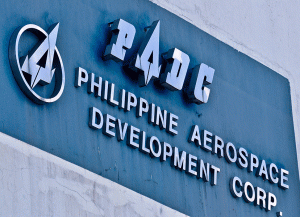 |
PADC currently provides MRO services for the following:
| Services | Description | |
| Airframe | Inspection, repair and alteration of:
|
|
| Engines | Lycoming and Continental piston engines up to four hundred (400) HP rating
As the Allison Authorized Maintenance and Overhaul Center (AMOC)in the Philippines, PADC undertook theForeign Military Sales (FMS) program on the overhaul of the Allison 250-C30 engines of the Sikorsky helicopters and the Allison 250-B17 engines of the Nomads |
|
| Propellers | Repair and overhaul facilities for:
|
|
| Landing gear | Functional Test, Repair and Overhaul of landings gears for:
|
As shown by the list above — which was taken from the PADC Website — these capabilities remain limited to the types of aircraft that were in service at the time of this GOCC’s inception. Whereas private MRO companies, such as Lufthansa Technik Philippines — a joint venture between MacroAsia Corporation and Lufthansa Technik AG — benefit from foreign capital and know-how and cater to larger and more sophisticated aircraft, the PADC’s service offerings are comparatively stunted.
In its current form, the PADC is ill-suited to provide MRO services for the dozens of aircraft that are coming for the AFP. Closing the gap between current capabilities with what our new warplanes require will require a systemic evaluation of why the PADC atrophied in the first place. Assuming the PADC can be recapitalized and modernized, if not replaced with an equivalent but optimized organization, such an entity would be the perfect platform for Public-Private Partnership ventures that would not only satisfy the needs of the AFP, but also compete in the global MRO market.
For this to work, however, critical mass involving the following considerations must be reached:
- Funding
- Opportunity
- Know-how
The funding is there, care of the various funding instruments that have been developed over the years to justify and enable defense spending. These include procedures for proper access of the AFP Modernization Trust Fund, legal basis for private contributions to that fund (c/o Section 6, sub-paragraph “i” of Republic Act 10349), to the implementing guidelines for Multi-Year Obligating Authority (MYOA) for DND acquisitions that exceed the annual budgetary allocation of the national budget.
“Opportunity” is a function of a multitude of factors but recapitalization of the air arms of the various services already create a baseline upon which to build. The new aircraft being acquired create this opportunity.
On the matter of “Know-How”, a shining example of advancements in locally available skills came to the fore in 2013, when the Philippine Air Force reached a major capability milestone careof the 410th Maintenance Wing when it completed Programmed Depot Maintenance (PDM) for C-130 #3633. A PDM is the aircraft equivalent to a major overhaul for a car, and in the US Air Force is done every 48 to 64 months. The 410th MW not only identified sources for the necessary parts — albeit piecemeal because of the lack of logistics arrangements — it also mustered the necessary technical expertise to complete the PDM in-house.
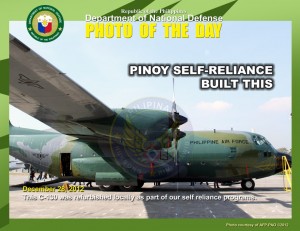 |
Previously, the PAF had never undertaken its own PDM of its complicated Hercules transports. The event was a testament to the PAF’s efforts to improve the technical proficiency of its personnel. While the need to retain these capabilities within the Philippine Air Force is important, the potential for leveraging these skills and lessons-learned in this effort to compete in the global Maintenance, Repair, Overhaul (MRO) market for military aircraft — as a properly OEM-certified maintenance facility — should not be ignored.
It is worth noting that the Malaysian Air Force unit responsible for similar functions was eventually privatized as a joint-venture with Lockheed Martin and became Airod Malaysia, which continues to provide support for the Malaysian Air Force. In 1997, Airod provided PDM services fo PAF C-130 #4593.
A conscious effort to maintain PAF equipment using a combination of in-house capabilities and domestic MRO companies as part of a self-reliance program would boost the MRO industry to the benefit of the Philippine labor force. Not only would this strengthen the local aerospace industry, it would also reduce the outflow of foreign currency. The experience, and resulting capital build up generated by a maintain-locally policy could very well give impetus to more ambitious aerospace manufacturing ventures. Provided, of course, that the Philippines were properly organized for such a transition. (See further down for how to organize for this shift).
Keeping aircraft in the air will mean profit for someone. Why not make sure that that “someone” is the Filipino people?
Economic windfall from maritime acquisitions
The Philippine Navy is in the midst of the largest post-Martial Law build up in its history. Plans to recapitalize the service have been in existence since the 1995 modernization program. The Navy reminded the public of this effort when it published it’s “desired force mix” in 2012 providing specific force-strength requirements for various types of vessels. The service refreshed this notice again three years later when it published he following infographic on the Philippine Navy website.
 |
The individual components of the PN’s modernization plan are the most expensive members of the AFP modernization effort. Consider the following projects on the list at the start of this article:
| Project | Authorized Budget for Contract | Quantity | ||
| Strategic Sealift Vessel Acquisition Project | P4,000,000,000.00 | 2 | ||
| Frigate Acquisition Project | P18,000,000,000.00 | 2 |
With an annual modernization budget of only P5B per year, many of the navy’s projects would not even be possible without the Multi-Year Obligating Authority drafted in 2010. The SSV project budget alone is larger than the appropriations for either the Department of Science and Technology or Department of Trade and Industry. The sheer amount of monetary resources that these projects require make them prime candidates for the budget slasher’s axe.
From a purely defense-centric perspective, the need for these acquisitions is undeniable. These vessels resolve long-standing capability gaps that prevent the Philippine Navy from operating in a modern maritime threat environment. It is the only navy in Southeast Asia without missile capable boats, and until its frigates arrive is the only maritime force with no response to a submarine threat.
But aside from emphasizing that these assets are par-for-the-course for 21st century maritime security, defense planners could also emphasize the economic benefits of continuing the maritime build-up — regardless if the vessels are actually built locally or imported.
The obvious direct benefit to the economy would be to build ships on the modernization list locally. With the navy fresh on the heels of two relatively recent self-reliant shipbuilding programs, there is ample evidence to prove that Philippine shipyards are ready to answer the call to build military vessels. These two projects are the Multi-Purpose Assault Craft (MPAC) manufactured by Propmech in Subic Bay, and the largest domestically built military vessel in AFP history: the BRP Tagbanua Landing Craft Utility (LCU) which was manufactured in Philippine Iron Construction & Marine Works (PICMW) in Jasaan, Misamis Oriental. Both appear below.
 |
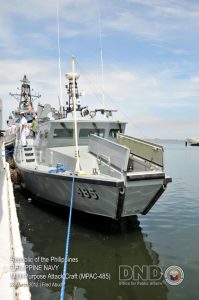 |
|
| BRP Tagbanua (PN photo) | Multi-Purpose Assault Craft (DND photo) |
It’s worth noting that the following components of the Sail Plan are comparable to the MPAC and LCU projects, in terms of vessel size, as well as technical and construction complexity, and would therefore be low-hanging-fruit for an indigenous shipbuilding program:
- Fast Attack Craft (42 units)
- Landing Craft Utility
Beyond these types of vessels, however, the Philippine Navy has thus far sought foreign assistance. The first SSV, the BRP Tarlac (LD-601) was built in PT PAL in Indonesia and the second SSV is being constructed at the same yard. For the Frigate project, a South Korean shipyard is currently undergoing Post Qualification evaluation for this two-ship acquisition.
There is good reason for this. While there are indeed shipyards in the Philippines with significant slipways and are capable of constructing as many as five massive container ships simultaneously, these large yards are actually foreign-owned and are focused primarily on building ships for their foreign owner’s order books. The lack of participation of local shipyards in the bid invitations for the SSV and Frigate projects strongly implies that the local industry acknowledges this limitation.
Filipino controlled local shipyards face a number of challenges that need resolution. These range from the cost of electricity, supply chain issues (e.g., lack of domestic steel sources, etc.), to skills-deficits. On top of these industry challenges, there is also the matter of restricted access to key sub-systems that make up a modern warship. Foreign-manufactured sensors, advanced weapon systems, and similarly sensitive equipment are not available for export (e.g., ITAR) to non-state buyers. So local shipbuilders would not be able acquire these sub-systems themselves.
Therefore, for the near-term, we will need to resort to foreign sourcing for vessels that exceed our manufacturing capability or access to technology. This gives the AFP the best opportunity to achieve its modernization goals within a reasonable timeframe. The operative word being “near-term”.
Philippine Navy Sail Plan 2020 requires multiple instances of each ship. Therefore even if the initial orders for ships go to foreign shipyards, subsequent order need not be. A prime example of this mode of acquisition is Indonesia, and actually involves the Strategic Support Vessel (SSV).
The recently delivered Tarlac class SSV is based on the based on the Indonesian Navy’s “improved Makassar” class Landing Ship Dock (LPD). This ship, in turn, was derived from a design by Daesun Shipbuilding & Engineering of South Korea which built the first two ships of the class for Indonesia in South Korean shipyards. PT PAL, the Indonesian shipyard which built the BRP Tarlac and is currently building its sister ship, acquired design rights to the Makassar class LPD from South Korea, and is now offering the vessels for export. Whether or not South Korea continues to receive compensation for future sales of their design is unclear.
The potential benefits for the Philippine economy are too great to ignore. With careful planning, industrial incentives, licensing agreements with foreign partners — comparable to what Indonesia negotiated with South Korea — and synergy with the local shipbuilding industry, the remaining items in the Sail Plan could function as a catalyst for the shipbuilding industry.
Basis in law
Incremental efforts, from the Ramos to the Arroyo administration have created a legal framework that actually reduces the legislative ground work that the Duterte administration needs to perform to implement the proposals listed above. The unprecedented volume of purchases completed or initiated during the Aquino administration is — in truth — a net effect of the efforts that have come before. There is, therefore, no legal or procedural impediment to continuation of the current trend.
The AFP modernization law explicitly favors locally-manufactured defense articles:
Sec. 10. Self-Reliant Defense Posture Program. — (a) In implementing the modernization program, the AFP shall, as far as practicable, give preference to Filipino contractors and suppliers or to foreign contractors or suppliers willing and able to locate a substantial portion of, if not the entire, production process of the term(s) involved, within the Philippines.
(b) In order to reduce foreign exchange outflow, generate local employment opportunities and enhance technology transfer to the Philippines, the Secretary of National Defense shall, as far as feasible, incorporate in each contract/agreement special foreign exchange reduction schemes such as countertrade, in country manufacture, co-production , or other innovative arrangements or combinations thereof.
(c) The AFP likewise ensure that in negotiating all applicable contracts or agreements, provisions are incorporated respecting the transfer to the AFP of the principal technology involved as well as the training of AFP personnel to operate and maintain such equipment or technology.
The “spirit of the law” favors a Filipino-First procurement scheme.
As things currently stand, all pending acquisitions are required to have a local Philippine partner. A requirement enshrined in the Carlos Garcia-era Republic Act 5183 prohibits the Philippine government from sourcing items from companies that aren’t majority Filipino owned. This means that any foreign vendor seeking to sell its wares to the AFP needs to establish arrangements with Philippine business entities, which will then be responsible for representing the vendor in public biddings and similar engagements.
The legal framework for domestic windfall from the billions of pesos slated for defense expenditure for already-ongoing projects is already in-place. All that a prospective Secretary of National Defense, Chief of Staff AFP, or defense adviser would need do is to highlight this prospectively unaware policy makers within a Duterte cabinet.
Putting the plan in action
The law calls for technology transfers as part of as many acquisitions as possible. But creating the entities that would actually absorb that technology are simply non-existent. The Philippines’ failure to implement a far-reaching industrialization program has been a persistent stumbling block to the local defense industry. There are few, if any, companies that could oversee a turn-key transfer of defense technology.
While RA 5183 has been in existence for over half a decade, thus far it’s principal achievement as been the institutionalization of the “middle-man” industry: companies that simply peddle access to the corridors of power rather than actually promote the local defense industry.
Three key enablers must exist for this self-reliance based modernization program to take root:
- A coordinating body that can marshall government and industry resources for the identification and evaluation of technologies that would be candidates for technology transfer
- A manufacturing entity that would either serve as a catalyst for its sector or as proof of concept for local manufacture of defense articles
- A skills development agency that would ensure that existing, and prospective defense companies would have a pool of properly trained and educated workers from which it can draw its manpower requirements
Without these three pillars of self-reliance, any indigenous development program would be doomed to failure. From the 1950s to the today, the history of the indigenous defense industry is littered with failed ventures and prototypes that went nowhere mainly because of the lack of this three-legged framework.
All three enablers can, theoretically, be either based on existing agencies or be entities that would have to be created. The following sections presents one way such enablers could be setup.
Coordinating body: A PH DARPA
The Philippines needs an equivalent to South Korea’s Defense Acquisition Program Administration (DAPA), Singapore’s Defense Science and Technology Agency (DSTA), and the US’ Defense Advanced Research Projects Agency (DARPA). These organizations are drivers for defense technology innovation in their respective countries. For additional details about how a prospective Philippine DARPA would emulate the roles of these agencies in the Philippine setting, see the following article, which was endorsed for consideration within the DND-AFP decision structure in 2014: A Self-Reliant Posture (SRDP) Roadmap and a DARPA equivalent.
 |
 |
 |
This coordinating body’s principal function would be to ensure that the DND-AFP is a “wise buyer”. One that knows what it needs to buy, clearly articulate its needs to prospective bidders, and is able to distinguish between a lemon and a diamond-in-the-rough, when selecting items to be acquired. It would also determine whether or not the country’s needs are best served by acquisition of specific technologies and licenses for local manufacture, or if an outright purchase of equipment from foreign vendors is more appropriate. For an older discussion about considerations for local manufacture, see here.
Once the prospective PH DARPA determines that technology or license acquisition is a practical option, selection of a method for ingesting that technology or license becomes the next SRDP imperative.
When the items to be acquired are either technology, or licenses to produce equipment locally, then it would be the prospective PH DARPA’s role to facilitate absorption of that acquisition either by:
- Using a government manufacturing entity such as the Government Arsenal
- An existing commercial enterprise that would have to be selected through a competitive evaluation process to ensure the best qualified recipient, and to avoid allegations of impropriety
- A completely new entity, either in the form of a Government Owned and Controlled Corporation, or a Public-Private Partnership
Integral to that function would be evaluation of existing manufacturing relationships, assessing their benefits to the government — both for economics and security of access to materiel — and implementing a plan to move forward.
Manufacturing entity: Government Arsenal
Earlier in this article, the Philippine Aerospace Development Corporation was presented as an imperfect potential government interface to Public-Private Partnerships that would satisfy the needs identified in this article. There is, however, another government entity — under the Department of National Defense — that is currently operational and setting production records for items under its charter — a testament to the quality of its management, as well as the maturity of the organization: The Government Arsenal.
Although currently focused on munitions and small arms production, the Government Arsenal remains a logical starting point for any search for a model for domestic defense manufacture. It is a manufacturing entity that the government itself owns, and has a proven track record for marshaling engineering and manufacturing prowess in support of national defense. It has reached out to civilian agencies such as the Metals Industry Research and Development Center of the Department of Science & Technology, as well as private manufacturing concerns as part of its Research & Development efforts, making it a hub for defense technology knowledge.
By regulation, it is the primary source of war materiel for the AFP, PNP, and other uniformed services which can’t source ammunition externally unless the arsenal is not able to satisfy the need. As per Executive Order 303, Series of 2004:
SECTION 1. Sourcing the Government Munitions Requirements. The AFP, PNP, and other government agencies are hereby directed to source their small arms ammunition and such other munitions requirements as may be available from the Government Arsenal;
This is a significant, albeit controversial, advantage that ensures any government investment in the institution will be put to use for its benefit.
In addition breaking ammunition production records that were set in the 70s, the revitalized Government Arsenal has also embarked on a modernization program designed to assure the quality of its products, enhance accountability, and improve production efficiency. The following photos summarizing recent modernization gains were obtained from the Arsenal’s FB page.
The Philippine Economic Zone Authority recently approved its application to designate its sprawling complex in Lamao, Limay, Bataan as an industrial park. Once formally approved by the Office of the President, this status would put the arsenal in an interesting position to function as an “incubator” for defense-related enterprises.
 |
Working under the oversight of the prospective PH DARPA, and in cooperation with business development agencies such
- National Development Corporation
- Philippine Investment & Trade Corporation
- Public-Private Partnership Center of the Philippines
- Board of Investments
Government Arsenal facilities and management expertise could be brought to bear to either establish new ventures, or form partnerships with existing enterprises, to fulfill the logistical and/or manufacturing needs created by the influx of new equipment or the new equipment requirements laid out by the AFP modernization program.
Circling back to the proposals put forth earlier in the article, one candidate use for the GA’s industrial estate would be as host for affordable (if not outright free) manufacturing and office spaces embryonic defense companies, as well as secure storage facilities for goods that will eventually be sold to the AFP as part of logistical agreements. With the GA facility being a military base in its own right — know officially as Camp Heneral Antonio Luna — it provides unparalleled security for defense-industry investment.
Exploration of the potential tariff and immigration status incentives that could be offered for operating within the Industrial Estate must also be explored, but are currently beyond the scope of this article.
Whether these new ventures will eventually partner with the GA or a re-capitalized PADC, or if they will be entirely new separate ventures that could simply benefit from the GA’s infrastructure, will ultimately depend upon the judgement of the prospective PH DARPA and its partner agencies.
Skills development agency: TESDA and the National Defense College of the Philippines
Defense industries require specific skills not normally found in the private sector. A chemist knowledgeable in the explosive yield of specific proportions of highly combustible chemical compounds, for example, won’t be readily found among the roster of graduates of conventional schools. Neither will skilled rifled gun barrel makers.
Integral to the Government Arsenal’s modernization efforts is skills development of its staff. For this reason, the Arsenal has established education linkages with various foreign governments and institutions to establish education linkages with with their centers for defense education. Arsenal personnel have been sent for advanced Turkey for ammunition quality control courses, to Czechoslovakia for barrel manufacturing training, and to Nevada in the United States for various armorer’s courses.
A revitalized Philippine defense industry will need similar access to skills development opportunities as its range of services improve. A defense industrial complex will need its own schools to produce manpower with the right know-how.
 |
 |
The Technical Education and Skills Development Authority (TESDA), would be a logical starting point for the creation of the manufacturing base for defense companies. Apprenticeship programs could, theoretically, be arranged with the various manufacturing offices of the Government Arsenal, Philippine Aerospace Development Corporation (PADC) and similar institutions.
For more sophisticated projects (e.g., avionics design and maintenance, guidance software design), the Philippines could presumably follow the lead of Singapore’s Temasek Defense Systems Institute, which offers post graduate degrees for a variety of fields (e.g., Master of Science (Defence Technology and Systems) and maintains linkages with similar institutions such as the Naval Post Graduate School in Monterey CA.
The AFP’s own institutions of learning would be obvious foundations upon which such a post graduate program could be built. Particularly the National Defense College of the Philippines (NDCP) which is already recognized as an institution of higher learning, and is adept at maintaining linkages with the civilian academia.
Summary
To fulfill its constitutional mandate to protect the integrity of Philippine territory, the Armed Forces of the Philippines must be equipped to fight 21st century conflicts. From 1995 — when the first modernization law was enacted — to the present day, progress of this modernization effort has been snail-paced. Only in the past six years have significant strides been made, in no small part due to the existential threat posed by the People’s Republic of China.
To sustain the gains of the defense buildup, particularly in a fiscal environment that favors domestic concerns and populist programs, the Department of National Defense must demonstrate that the billions of pesos spent on its acquisitions have a direct benefit to the Philippine economy. By implementing the provisions of the AFP Modernization Law that require technology transfers and domestic production, the AFP modernization program could be packaged as a investment in new income-generating industries rather than superfluous expenditure.
Support for the domestic arms industry, and the employment they generate, could very well be what ensures continuity of the modernization program in the Duterte administration.

